Ideation
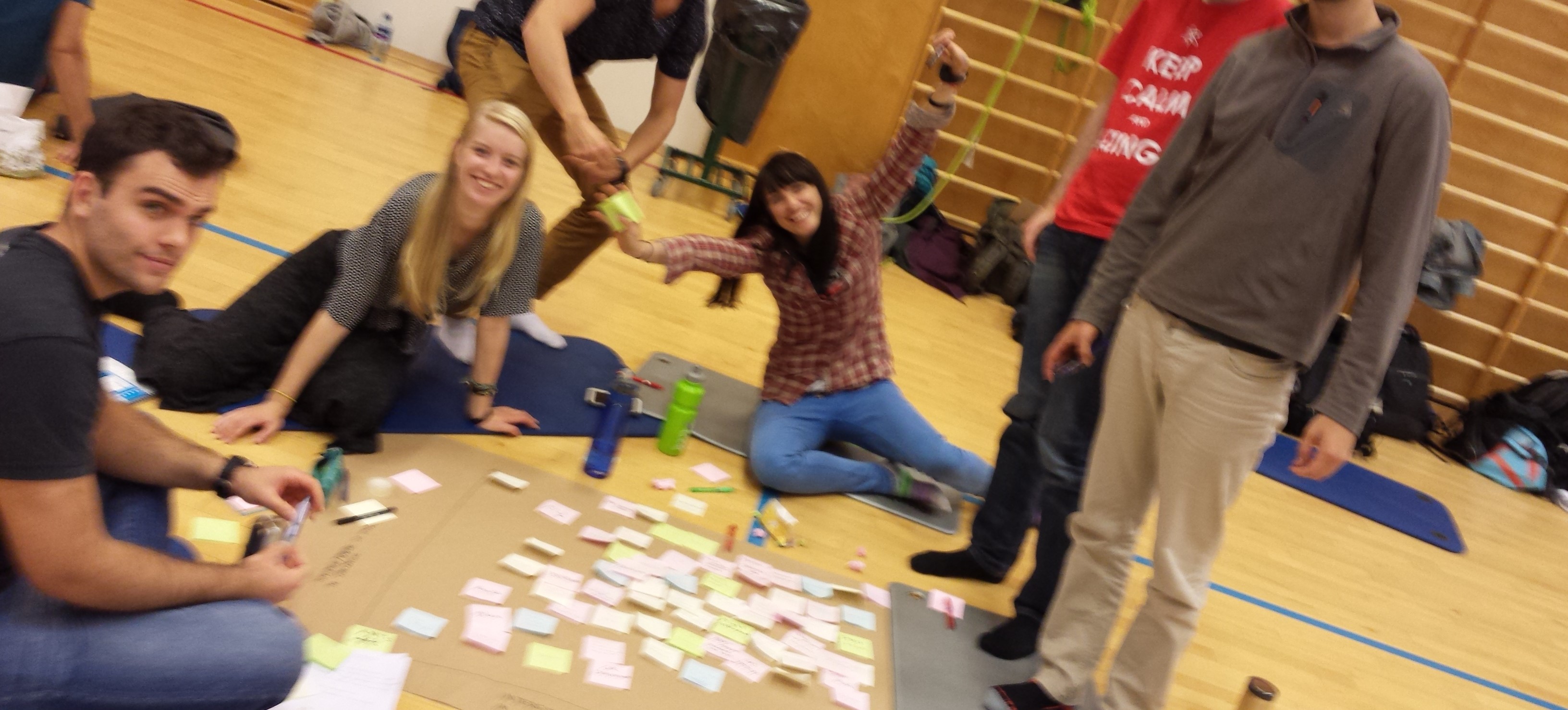
Before ideating, we had to develop a POV. Our first step was to think of all possible usergroups. We then identified all their different needs and found insights, which correlated to the users and their needs (person needs this because of insight). This was an iterative process, so we did this twice, and came up with slightly different results. In the end we voted for the POV we liked the most, which would become our main focus during the ideation phase.
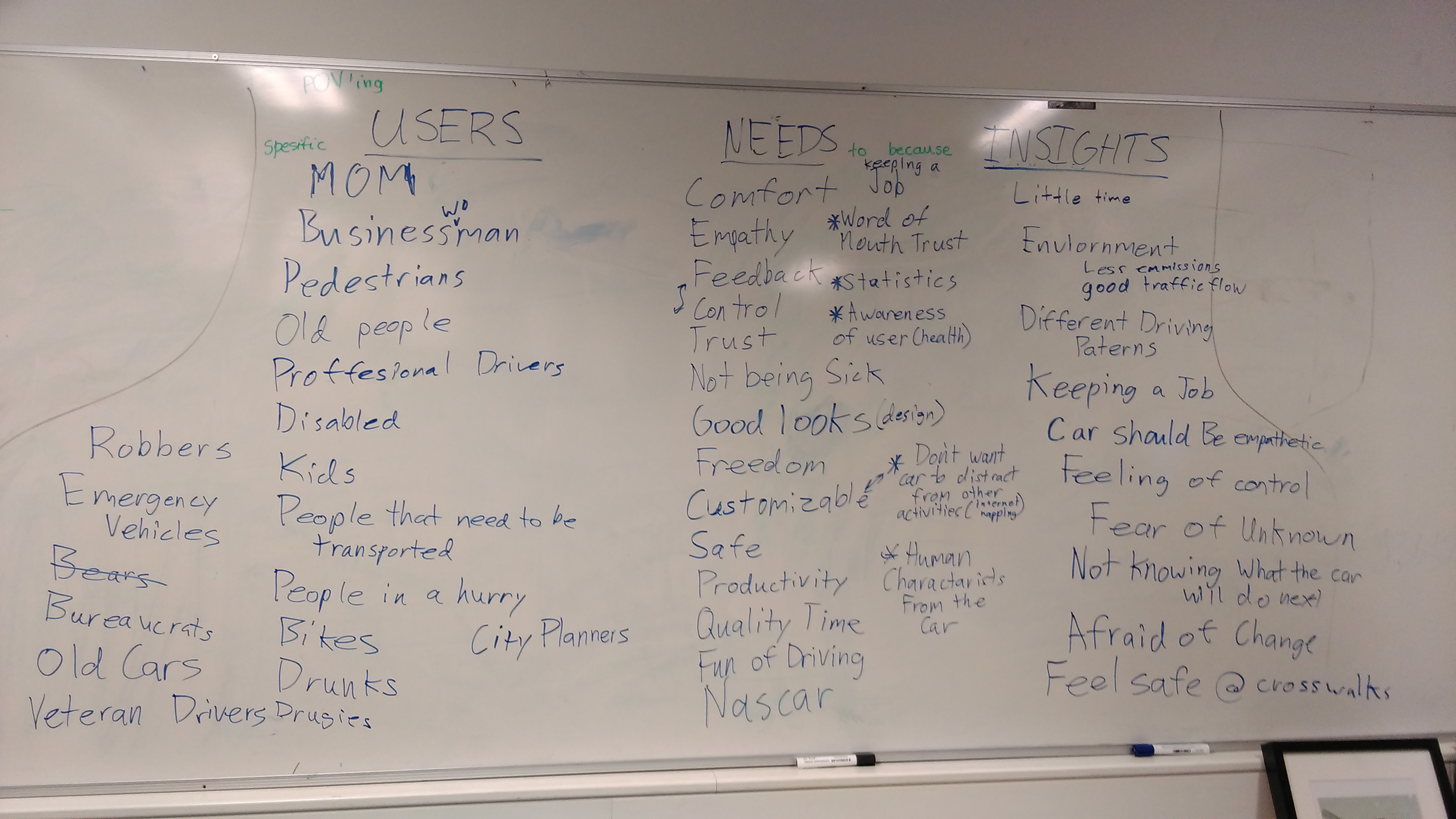
To help us define a POV, we made a persona named Knut(described below). Our POV was:
"Knut needs a way to interact with the environment to feel in control of the situation"
Knut lives in Byåsen and works in Arm. He is 45 years. The important thing is that he wants to use his time better while commuting. This means that he wants to feel safe, while not watching the road. He also wants comfort and easy communication with the car.
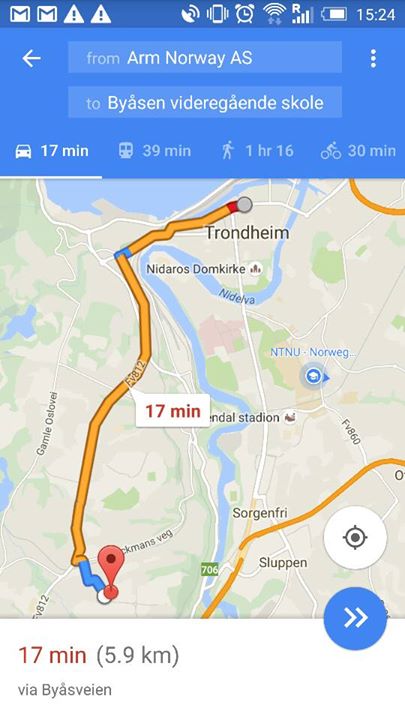
With the POV written on the whiteboard and half an hour of silence we did our first round of ideation. We decided to just draw and write whatever idea you had on an A4 and put in the middle of the table so the others could see it and maybe work further with the idea or be inspired by it. After half an hour we got a pile of 45 ideas. Some of them were based on the same foundation, and therefore we could assemble them into five clusters.
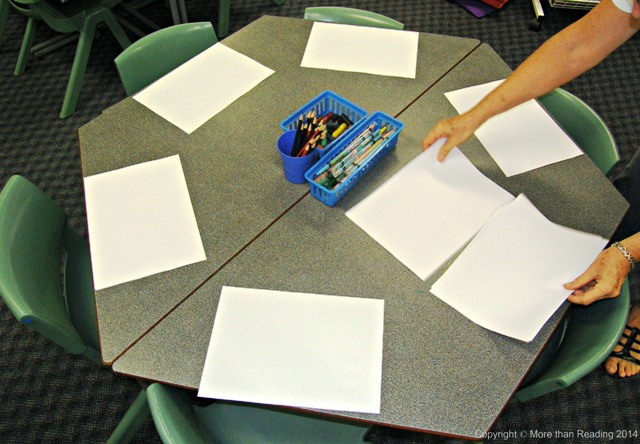
We named and describe the clusters as following:
Car to Environment Communication; This cluster contains ideas that are concerned with the communication from the car to other road users. The ideas play with the way how the car can show the road users they have been perceived or what the car wants from them. These signals can include signs, lights, alarm notifications and sounds.
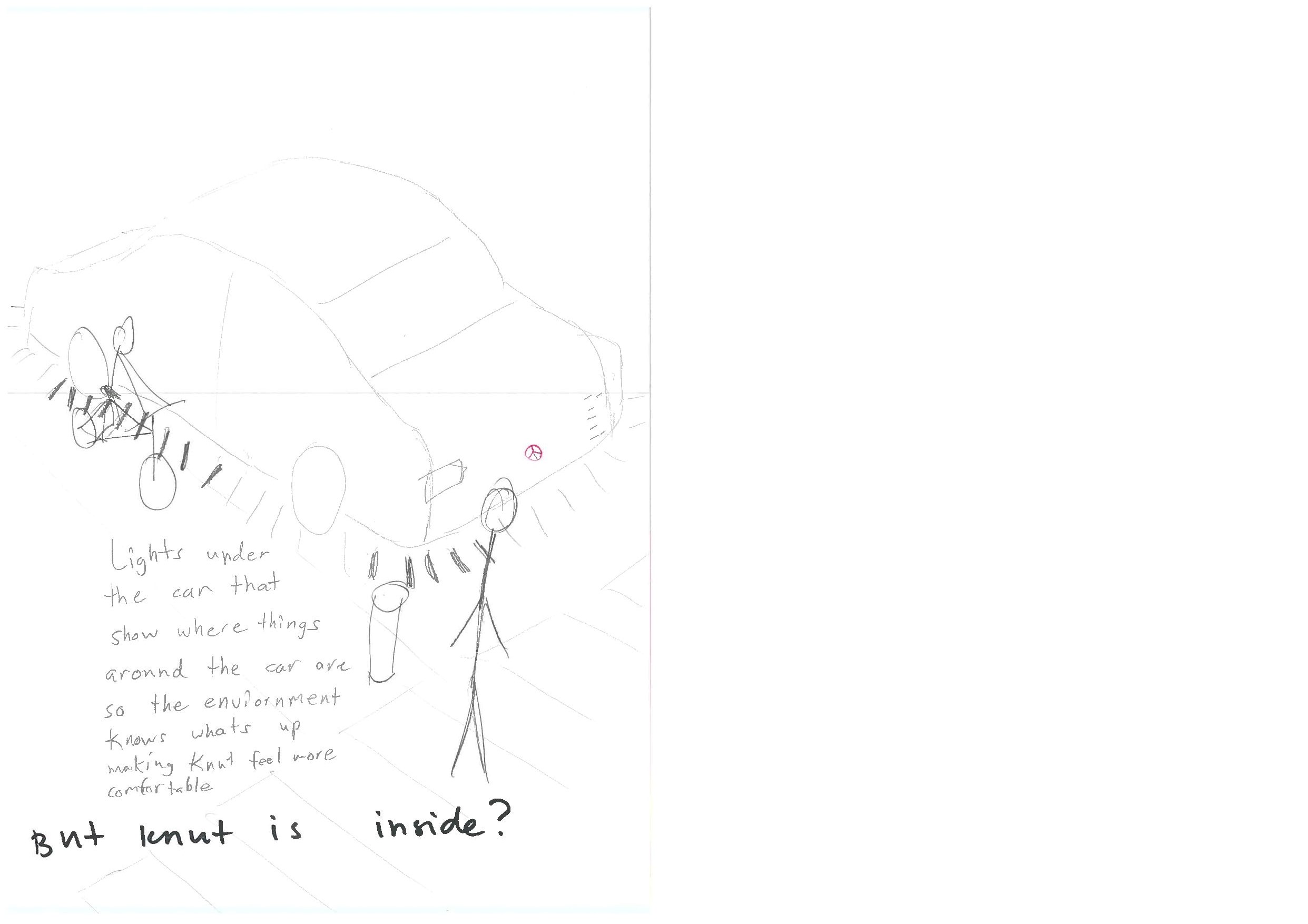
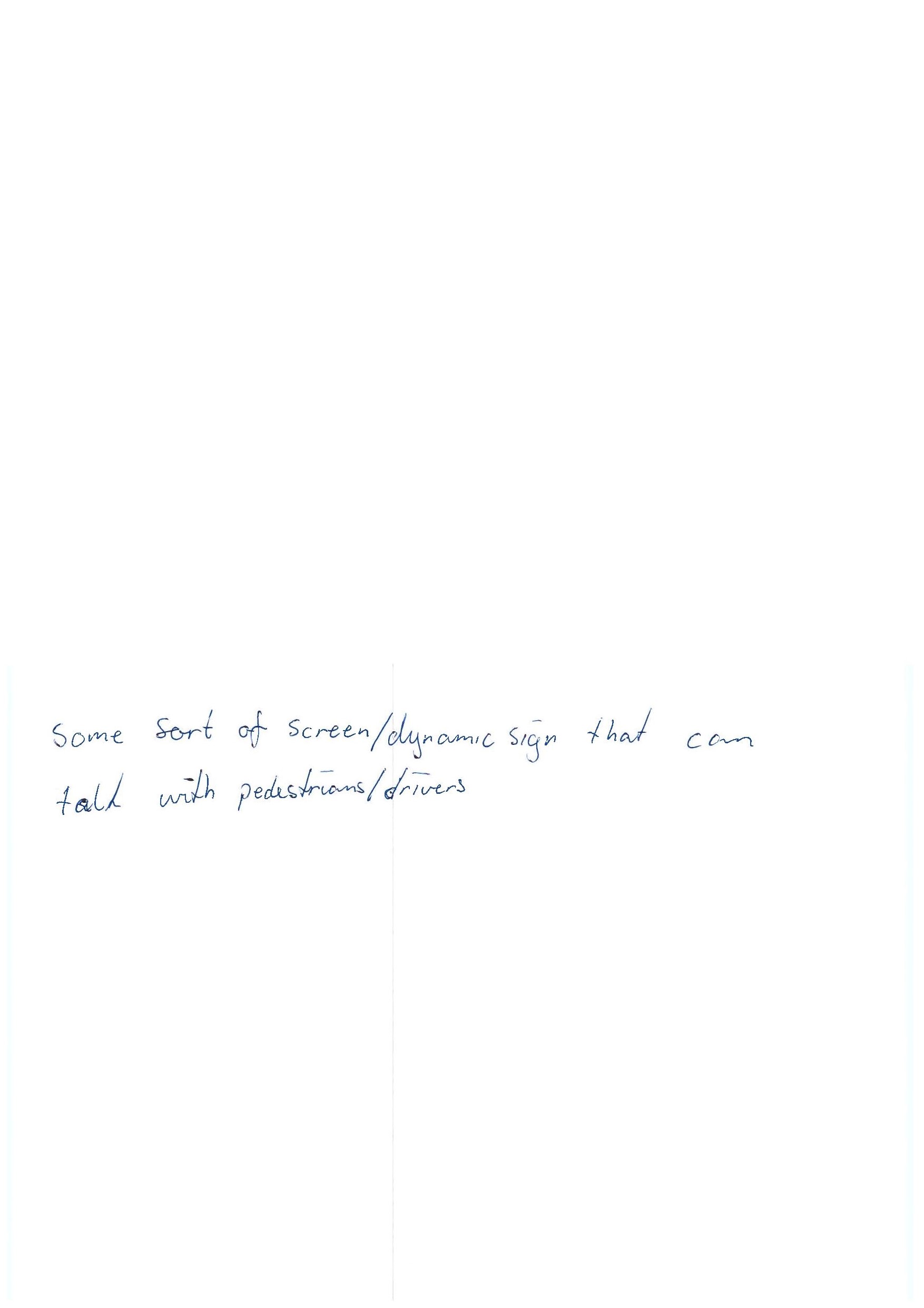
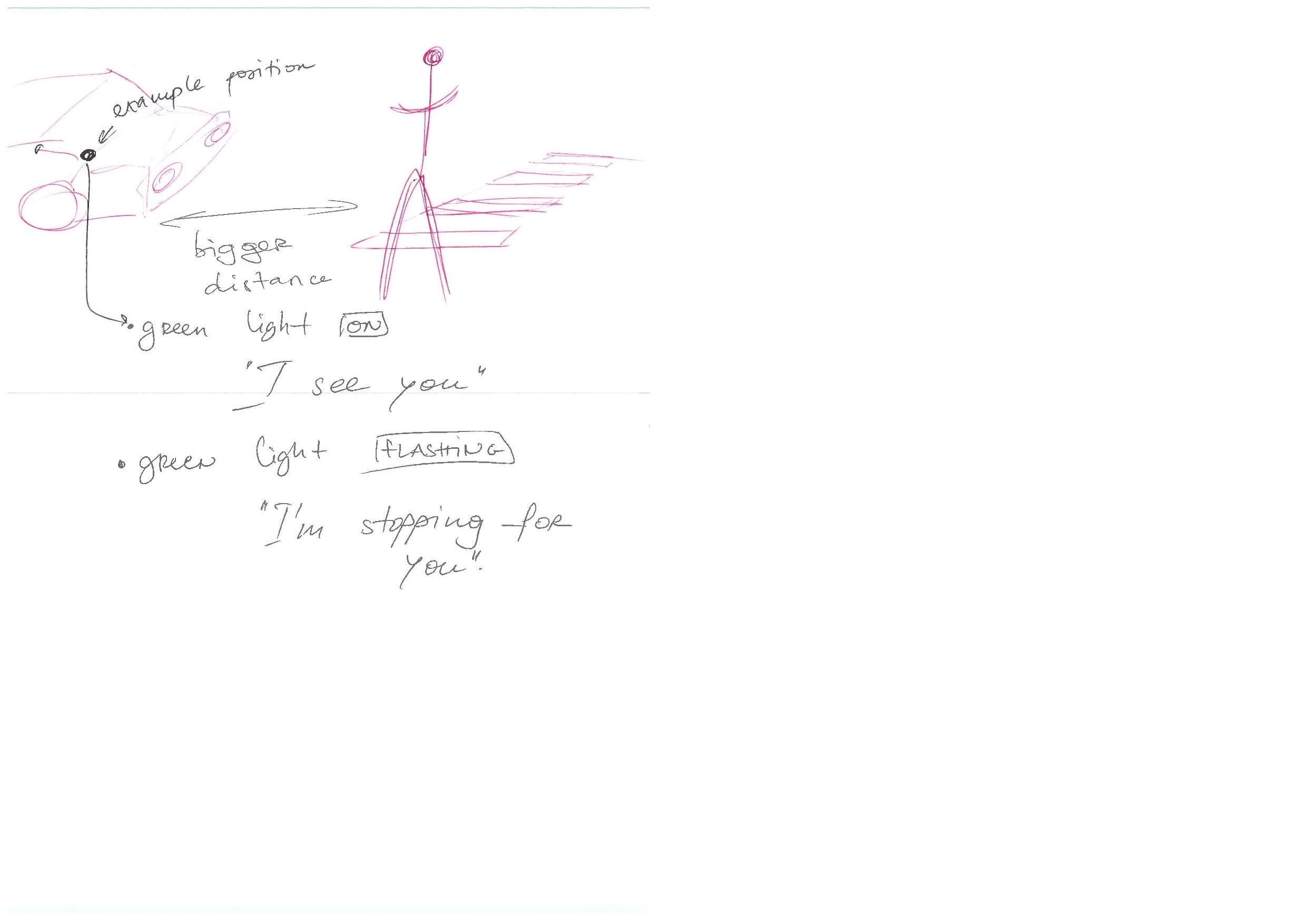
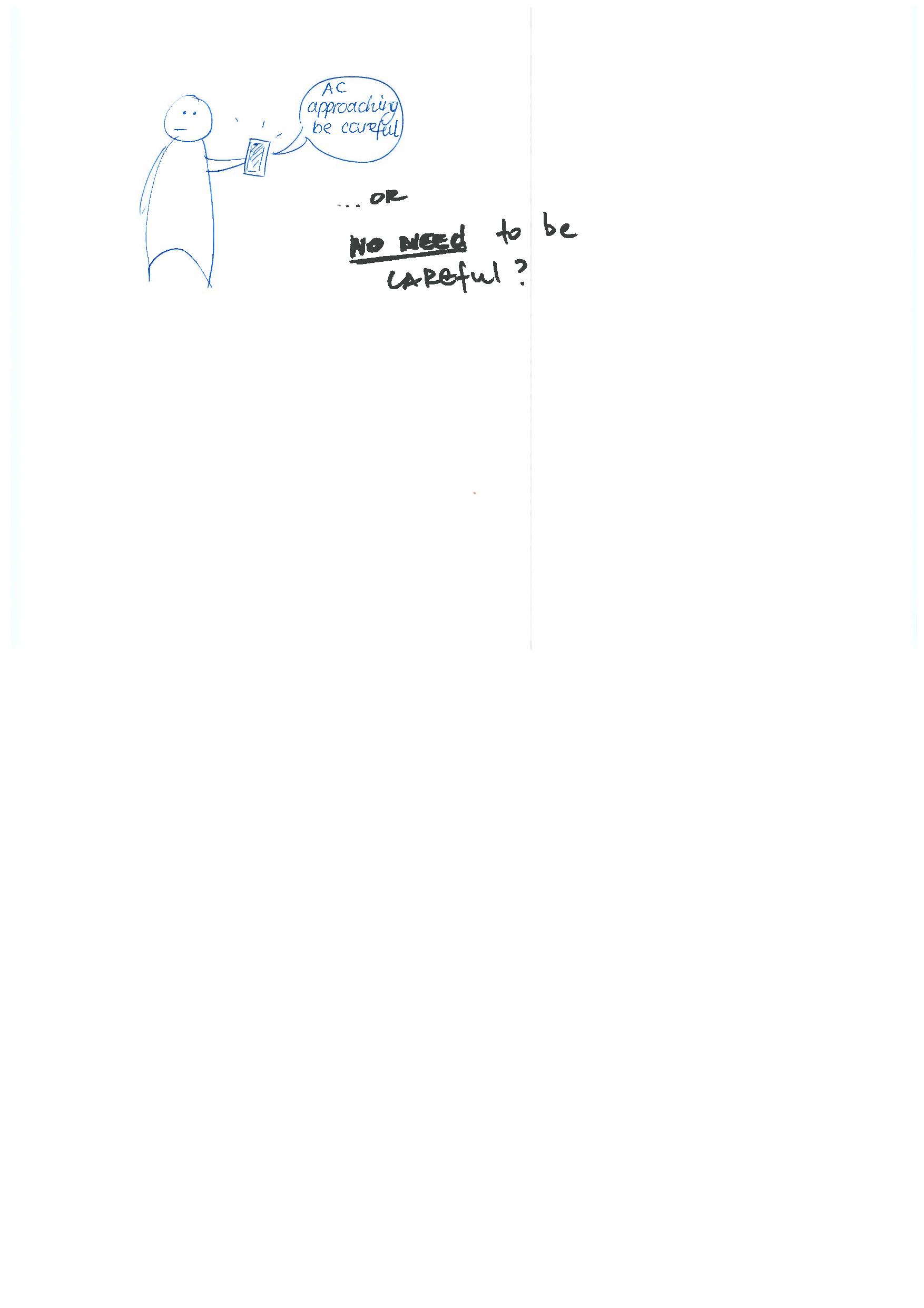
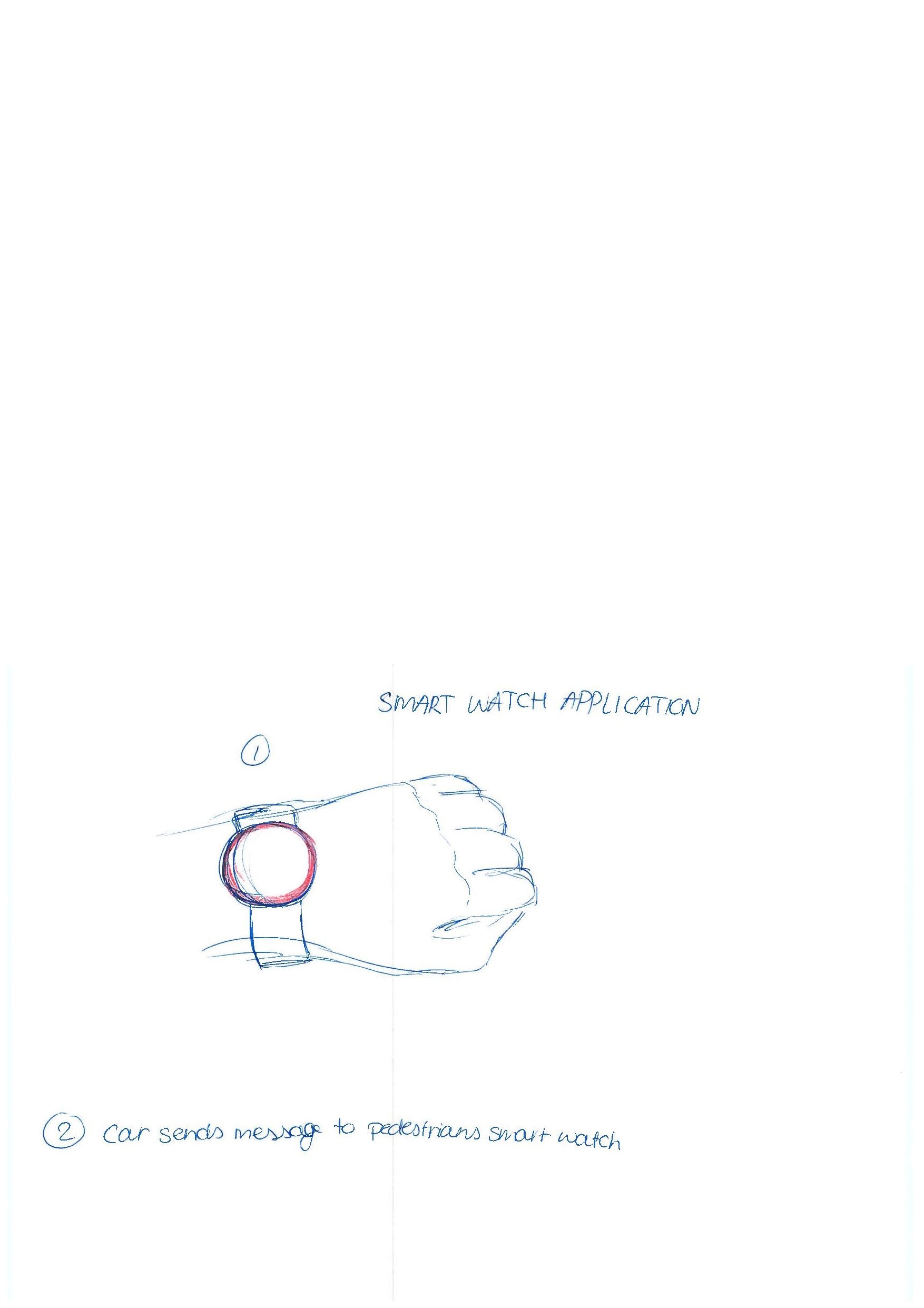
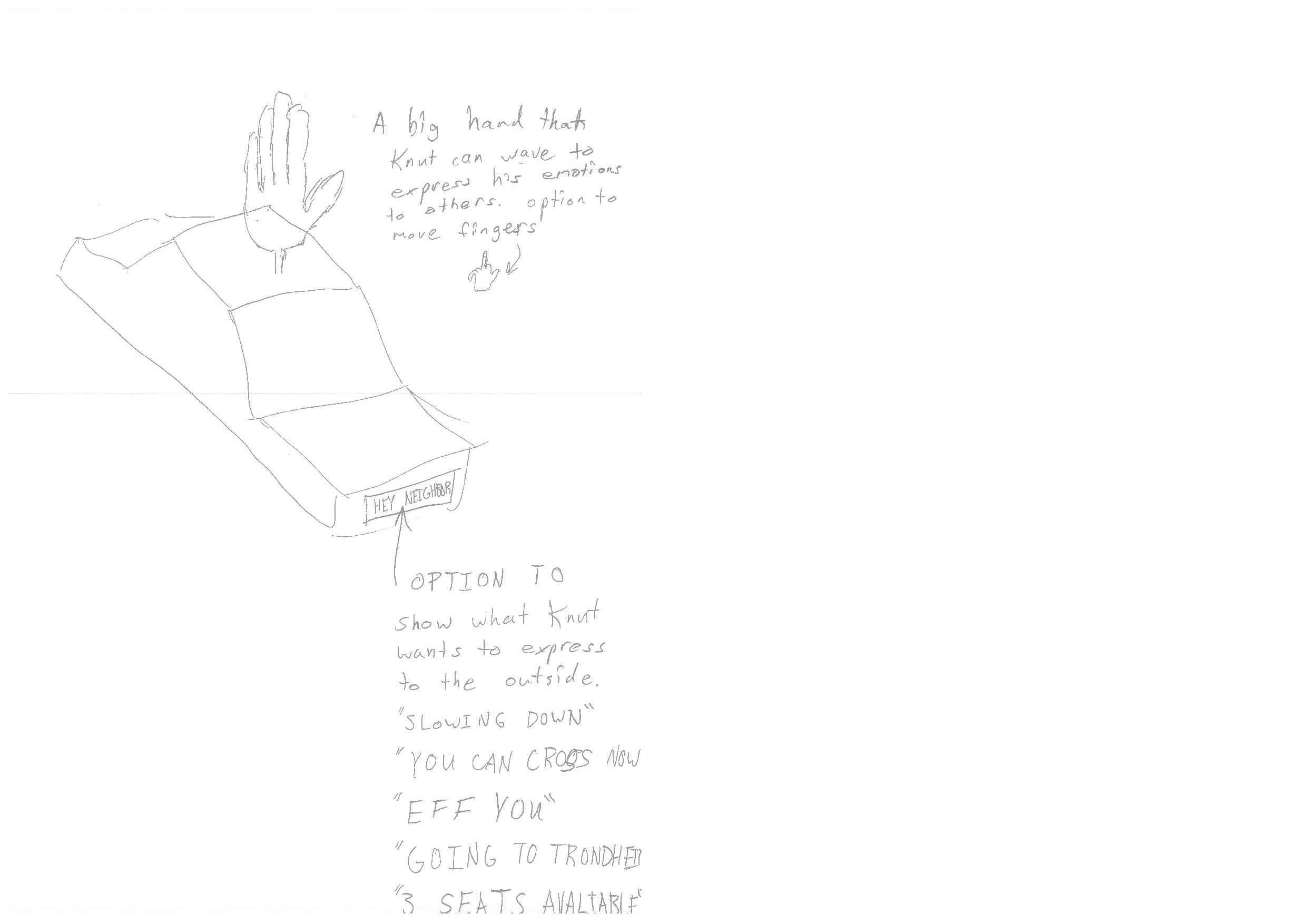
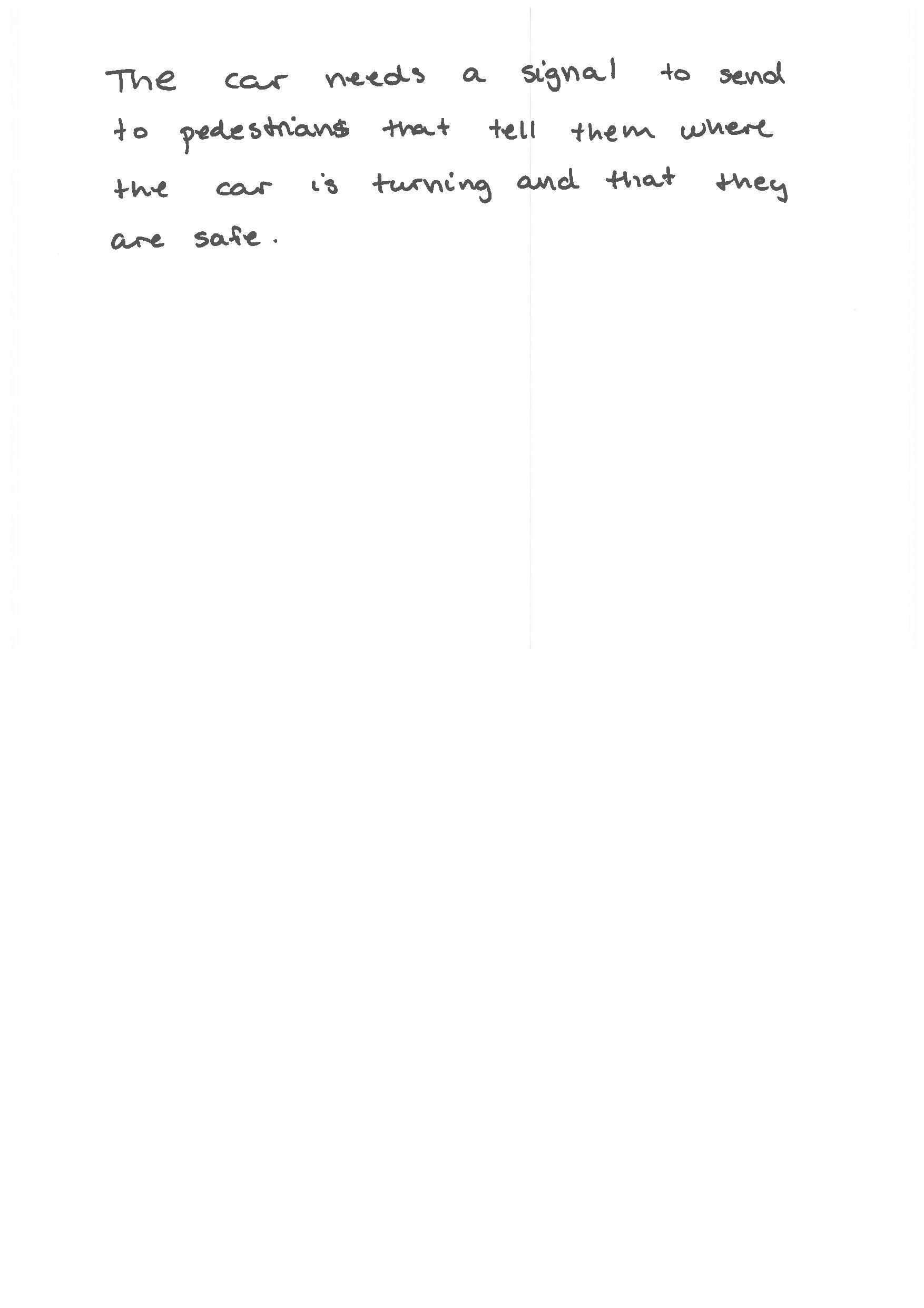
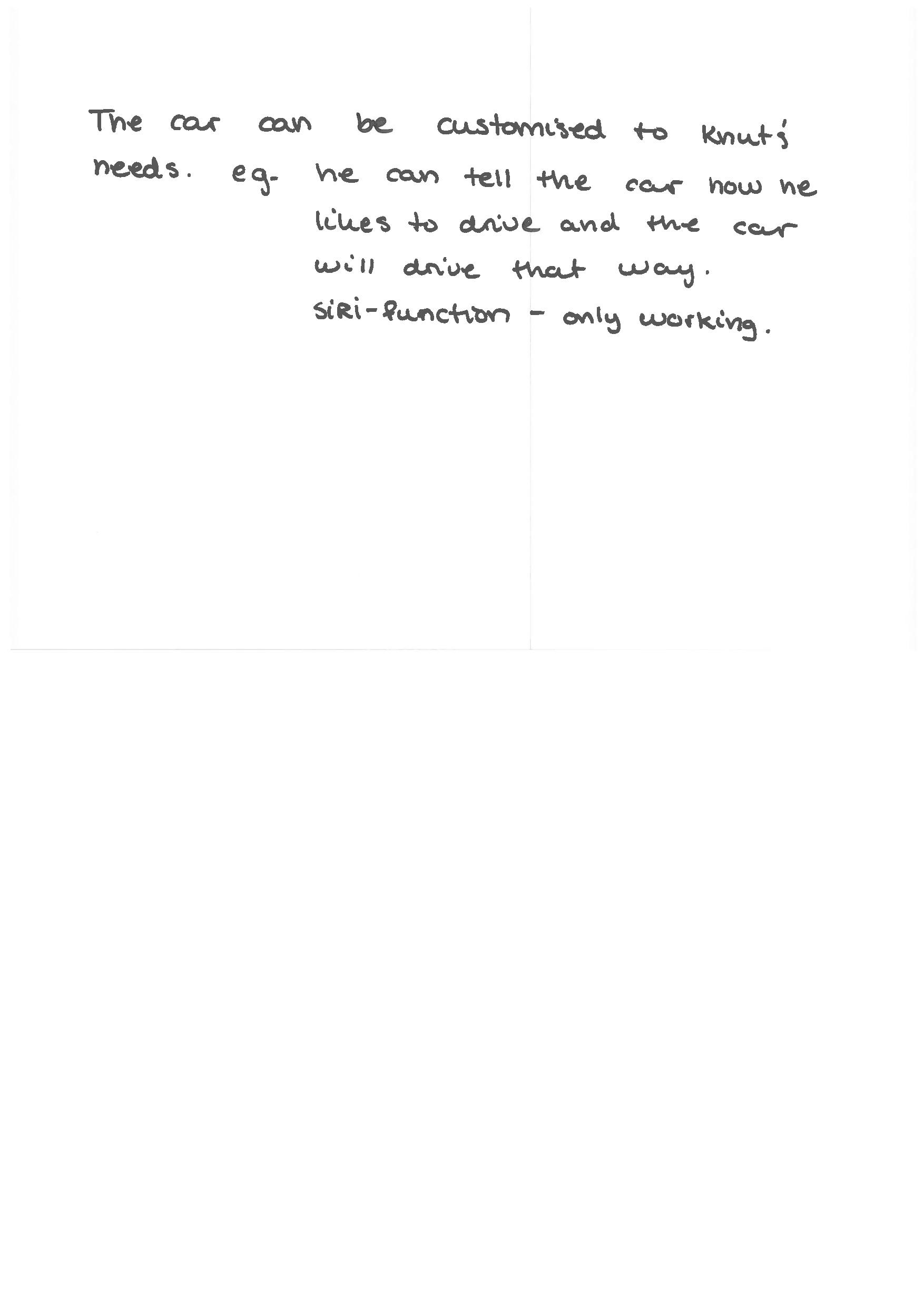

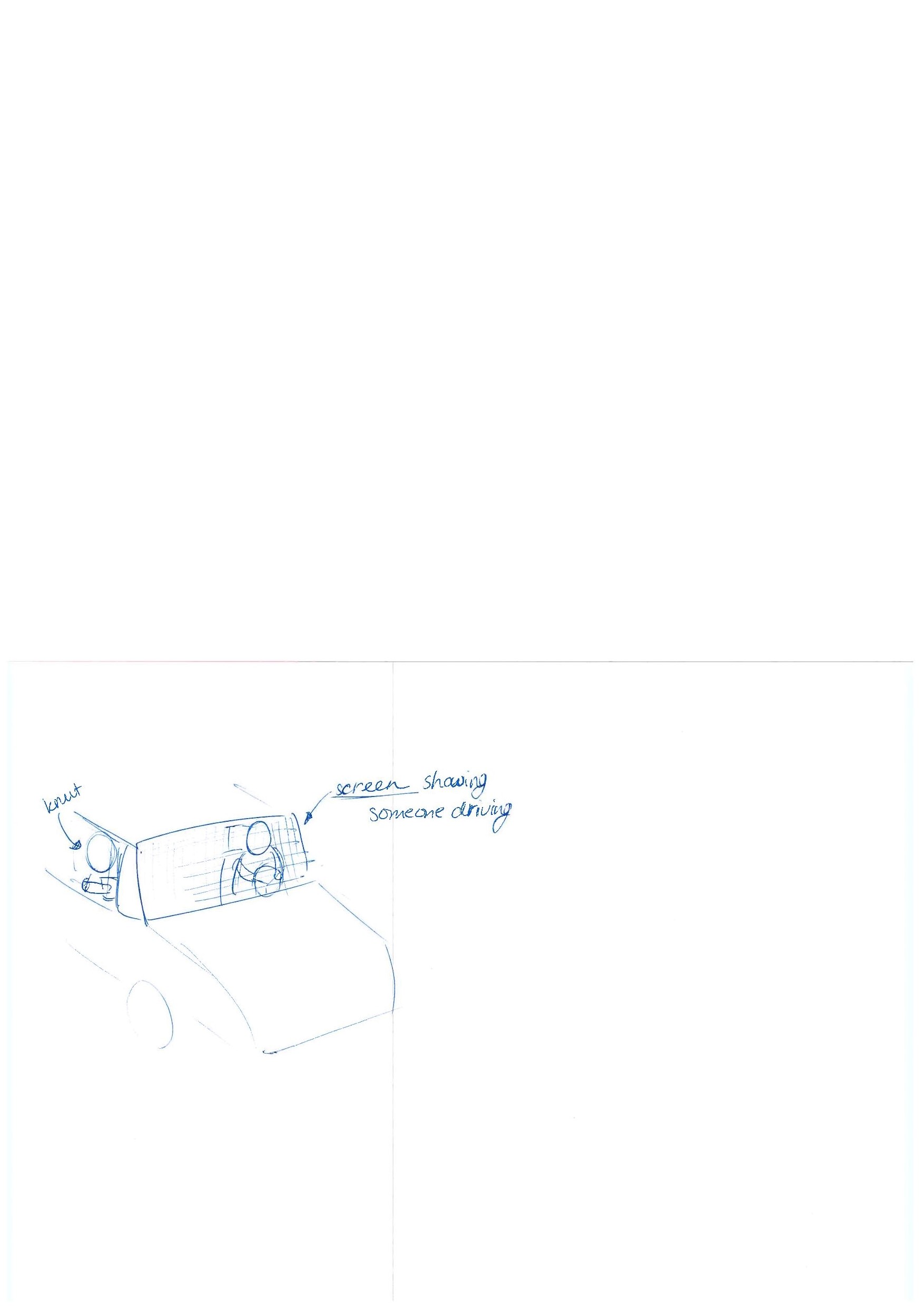
Car to Driver Communication; These ideas are based on that the car communicates what is going on outside the car to its driver and make the driver feel confident about the cars ability to perceive. According to the ideas this can be done by movement in the seats, lights, sounds, interfaces or augmented reality.
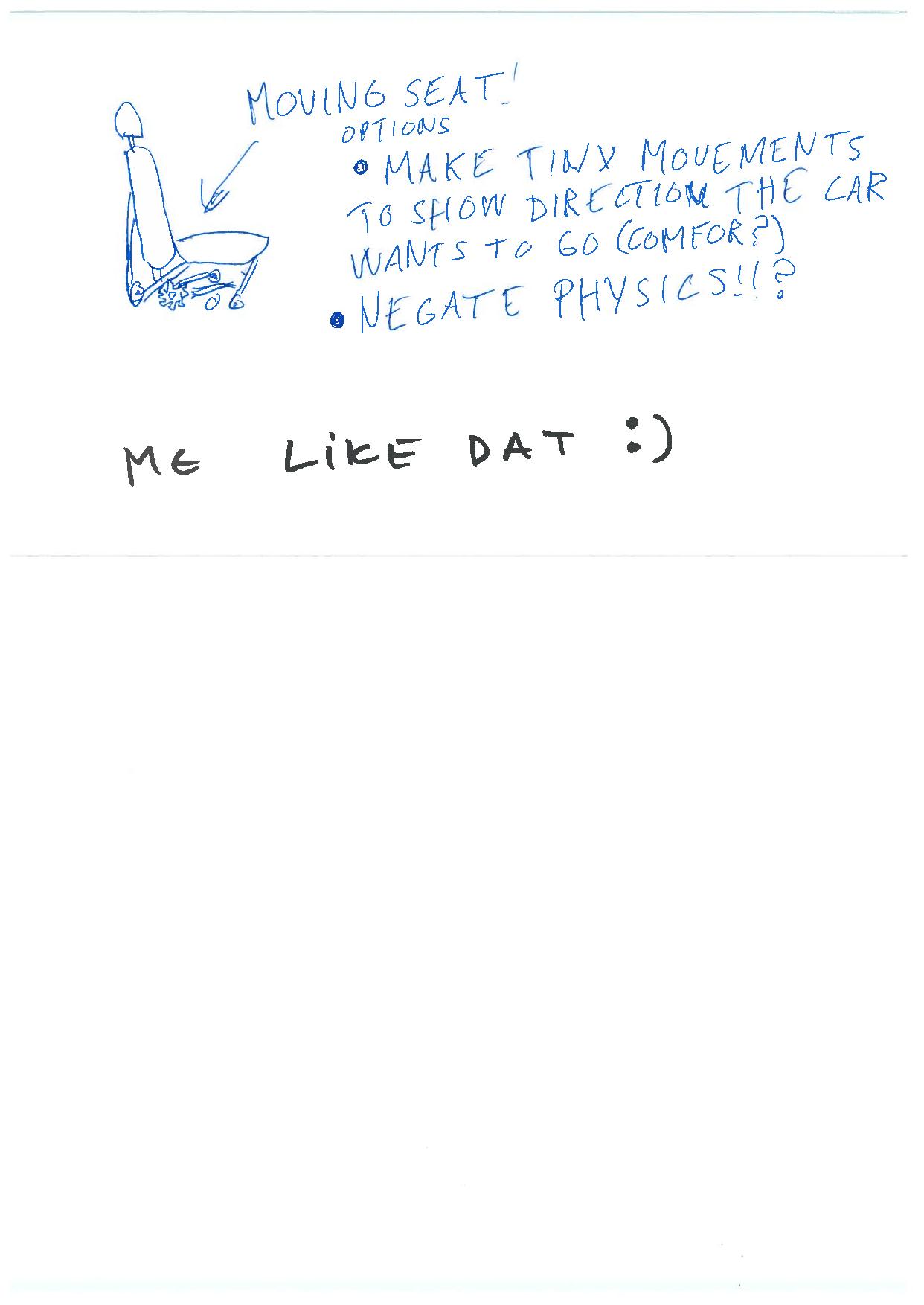
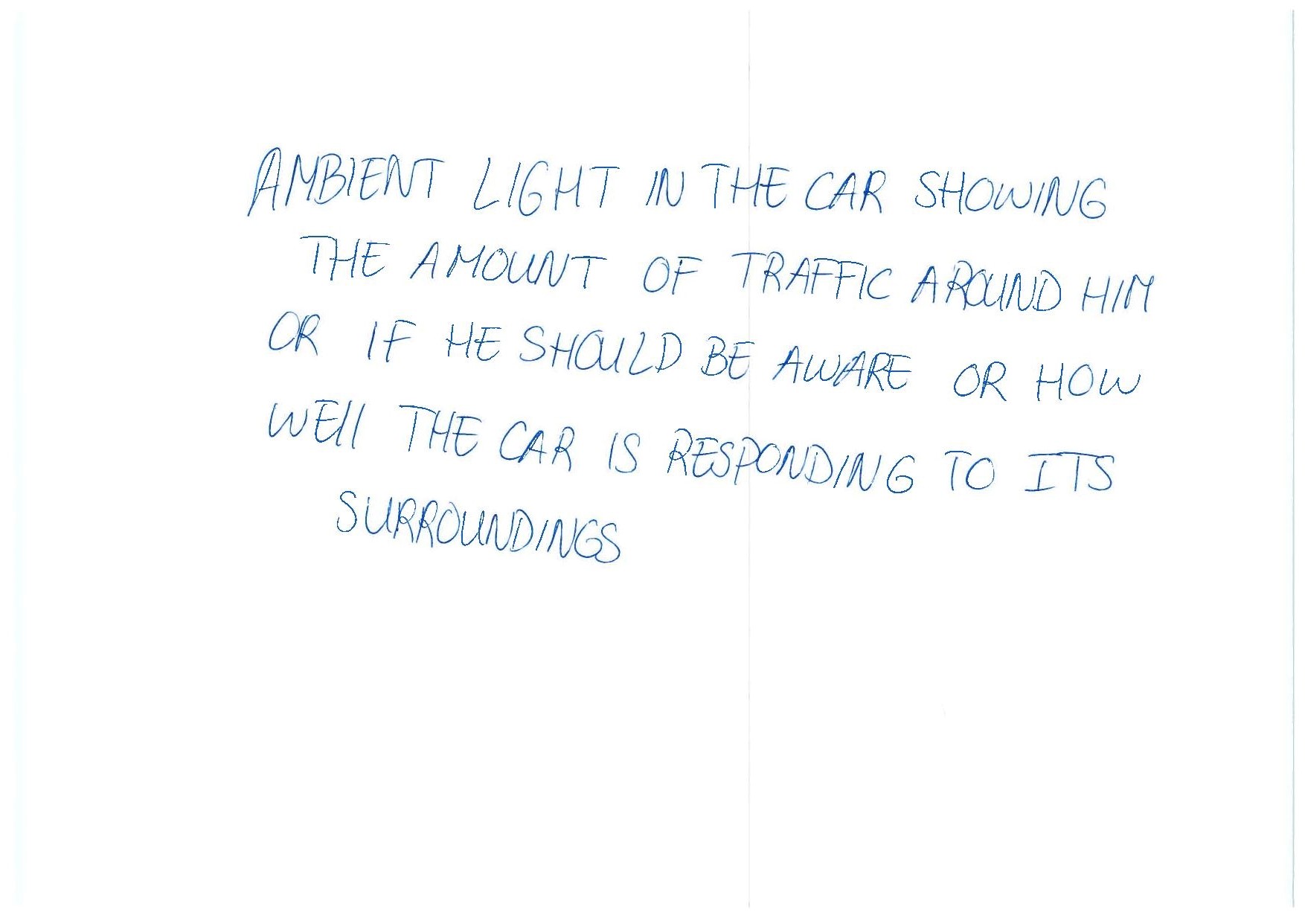
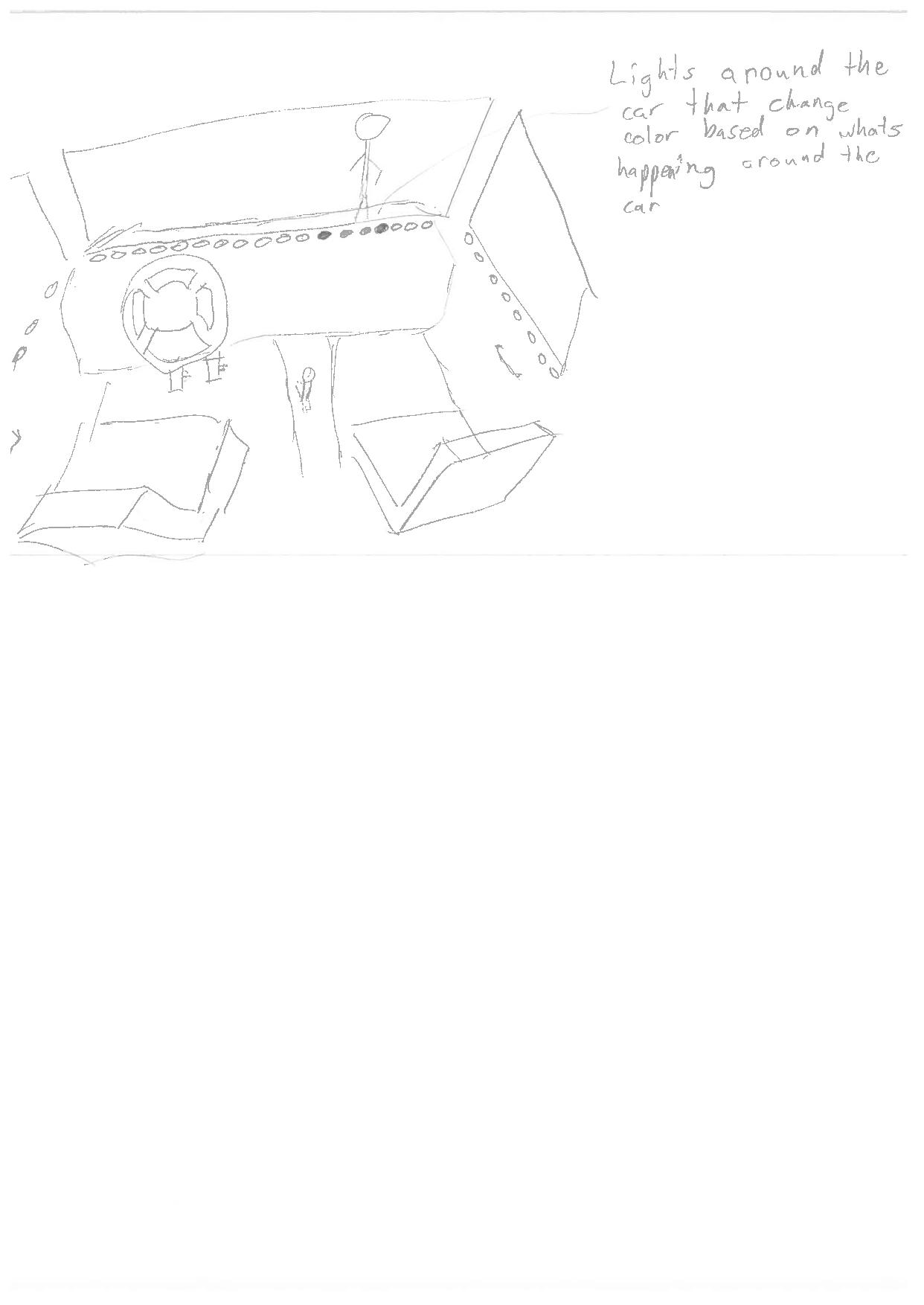

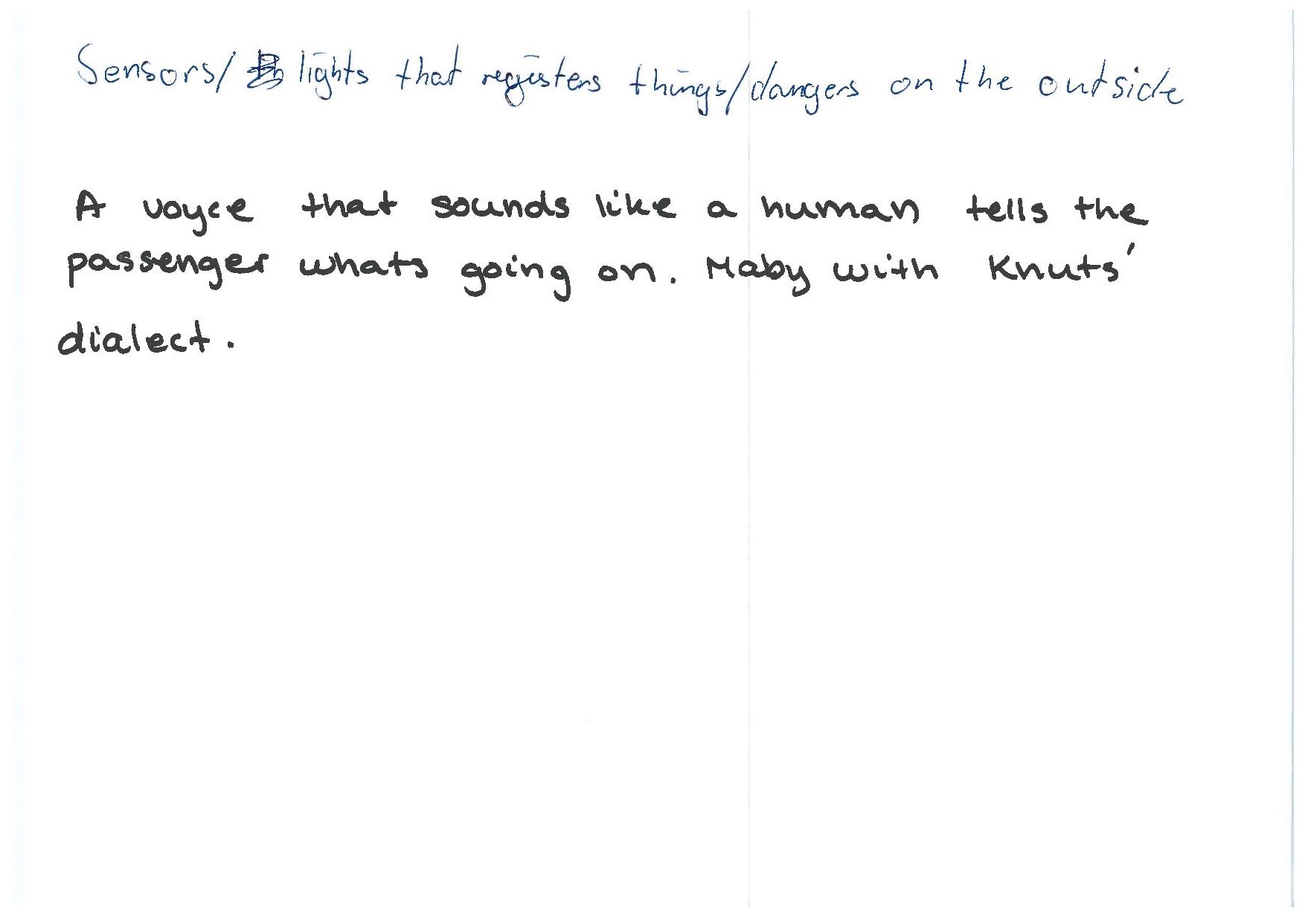
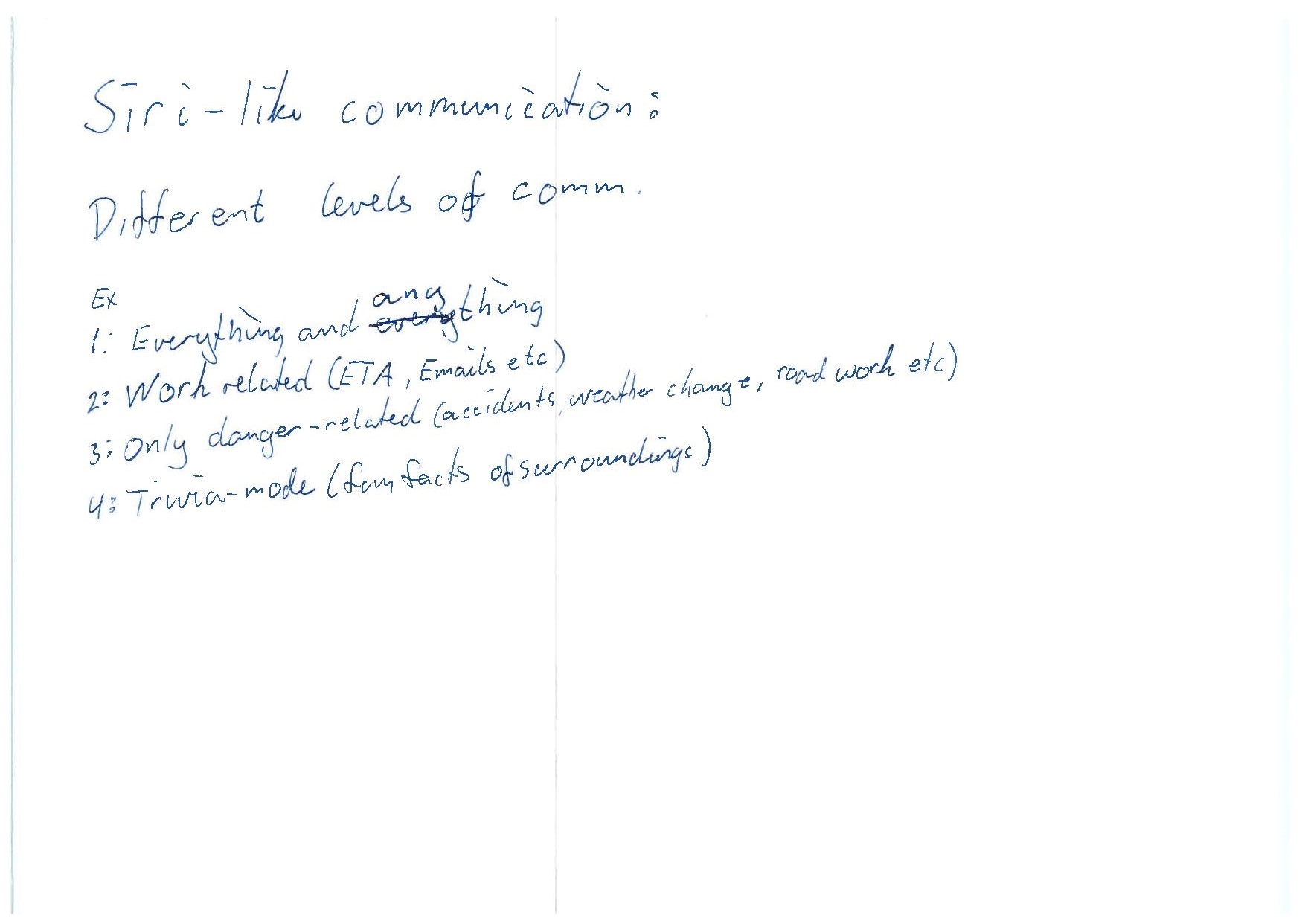
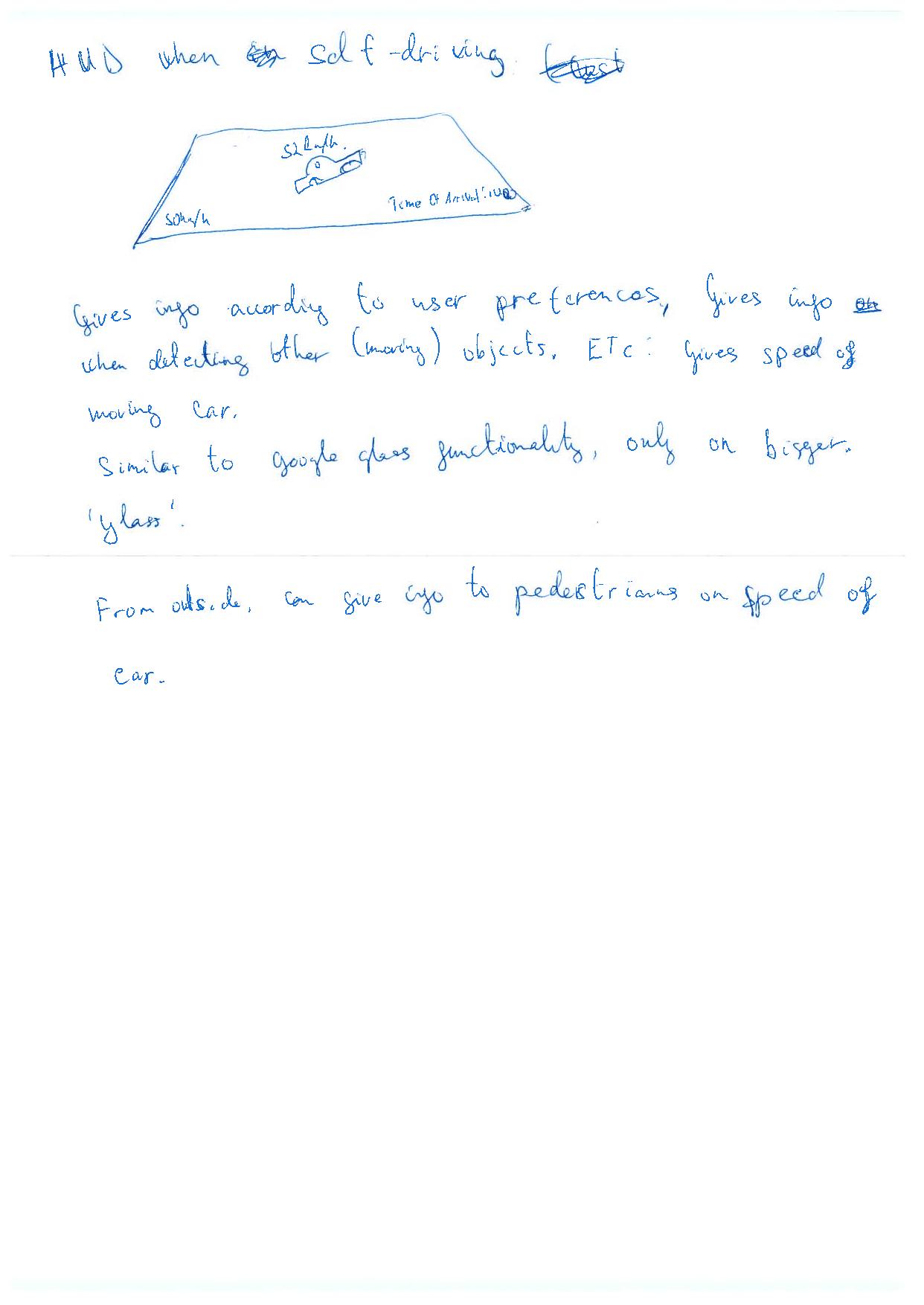
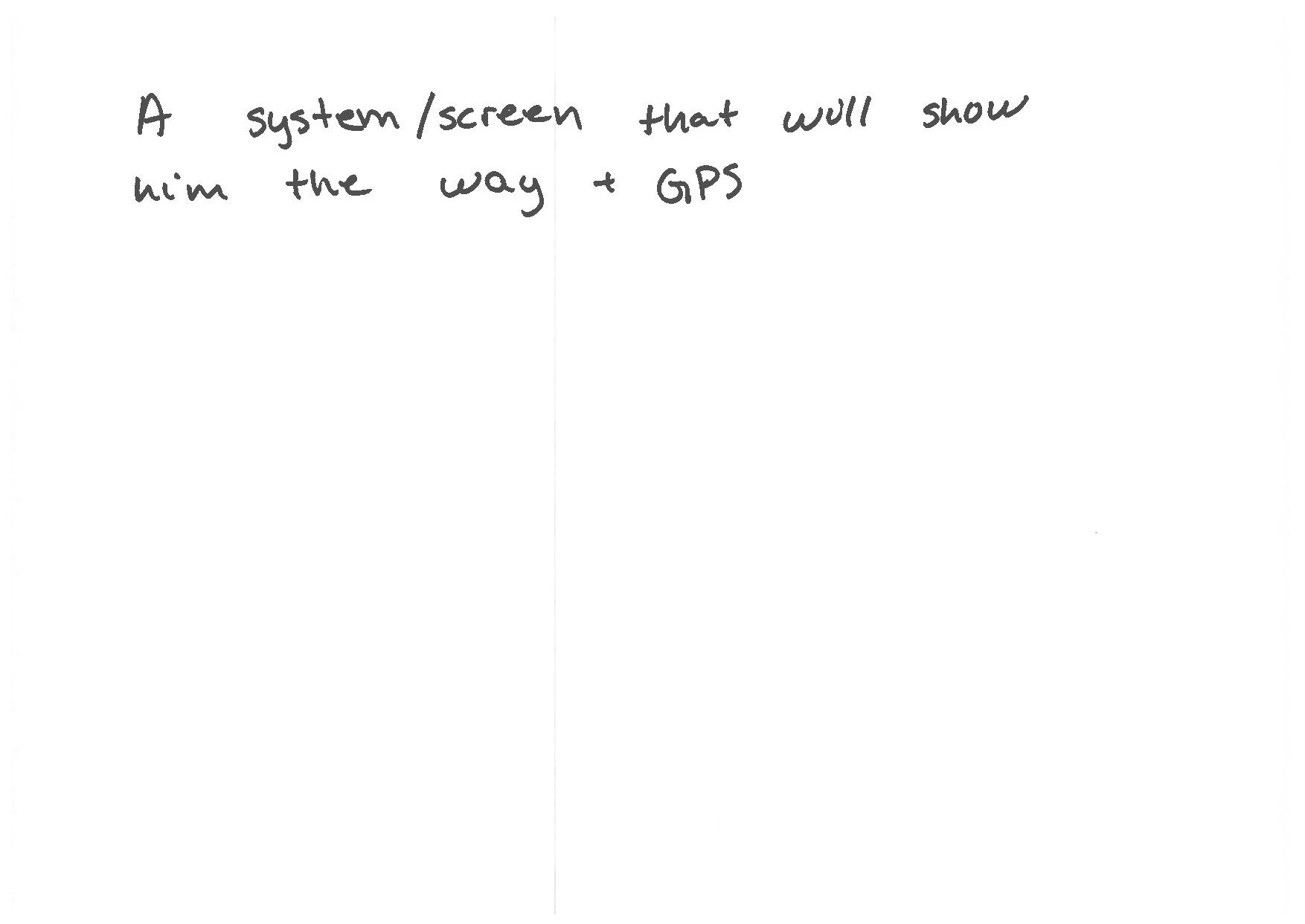
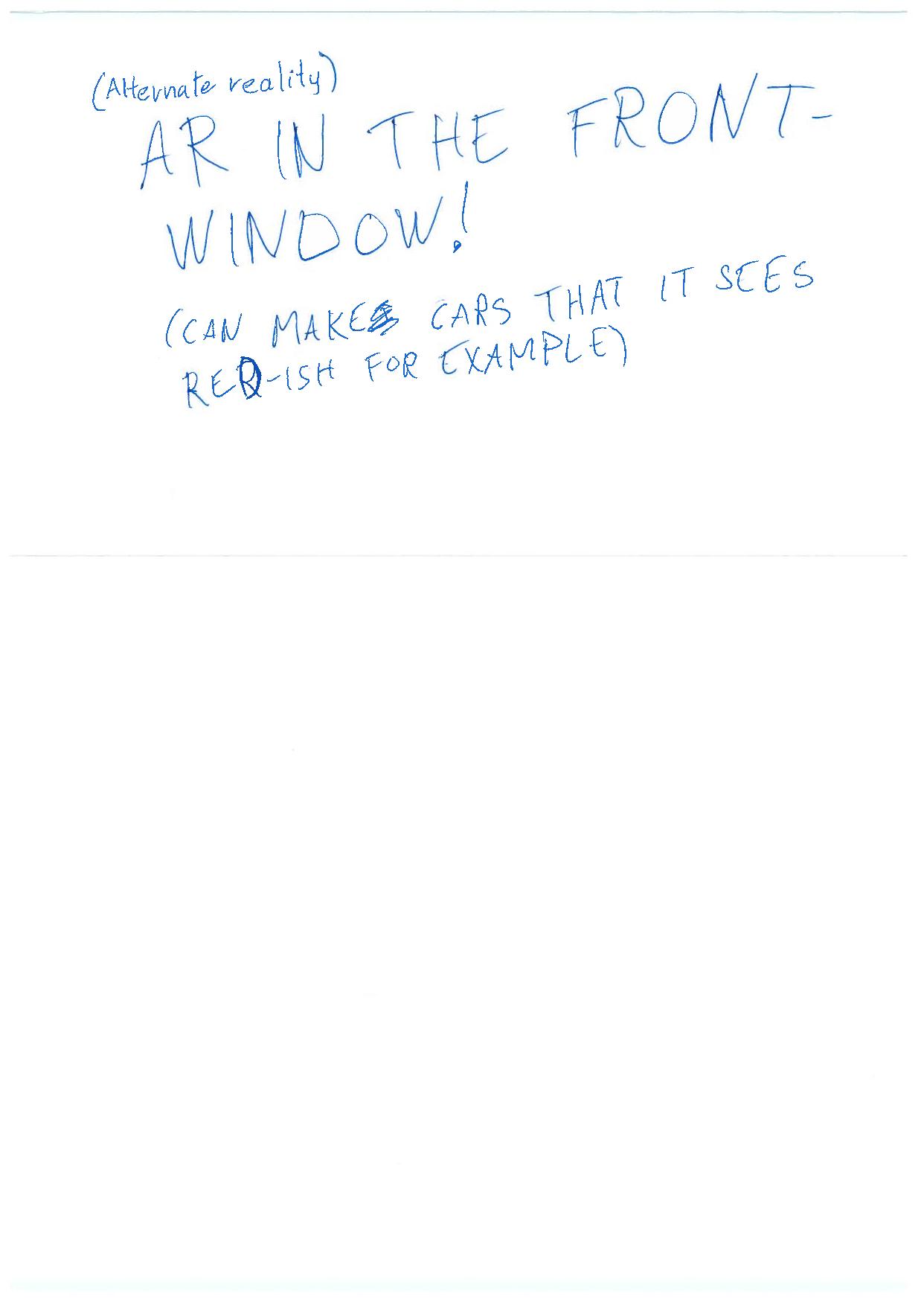
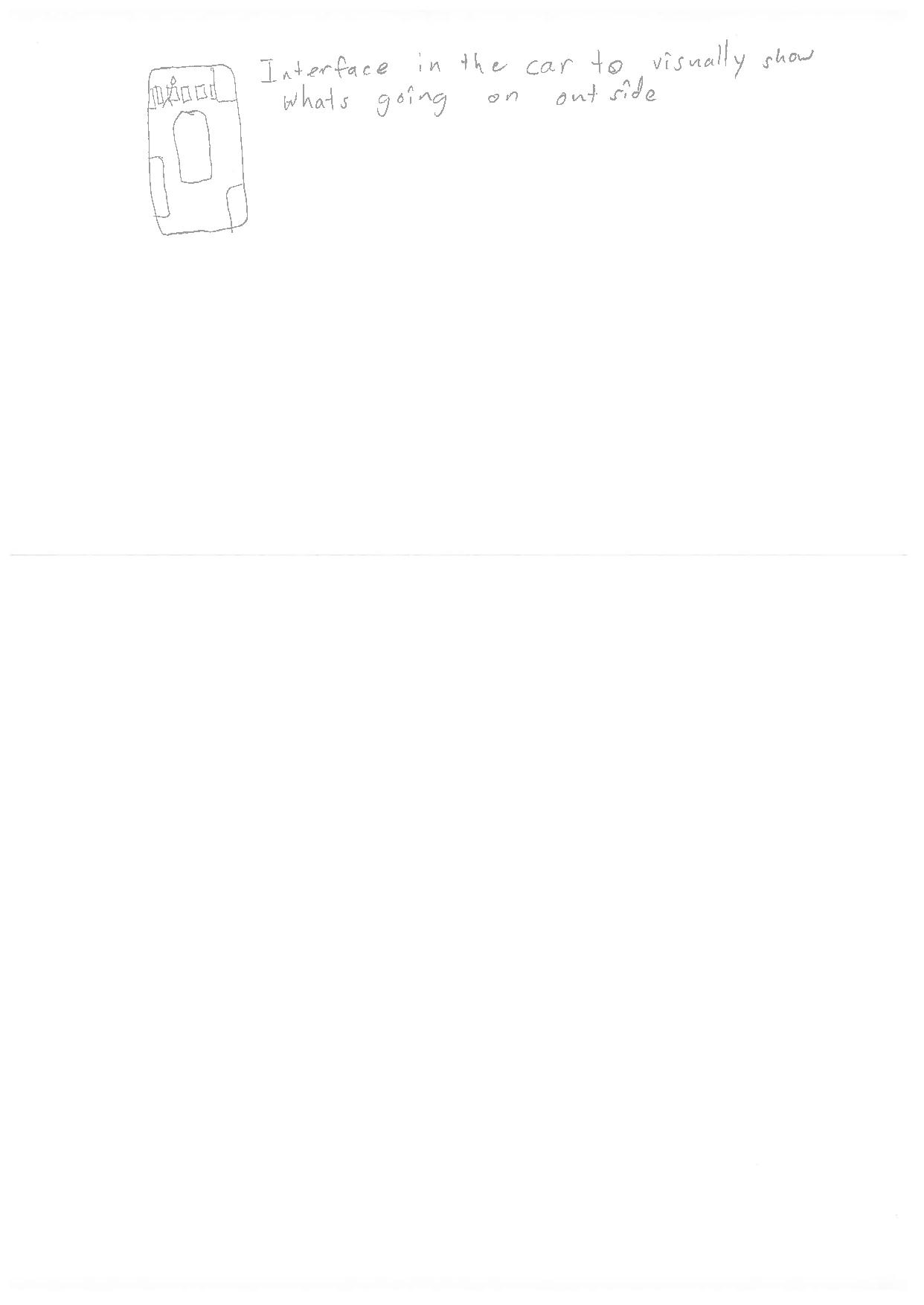
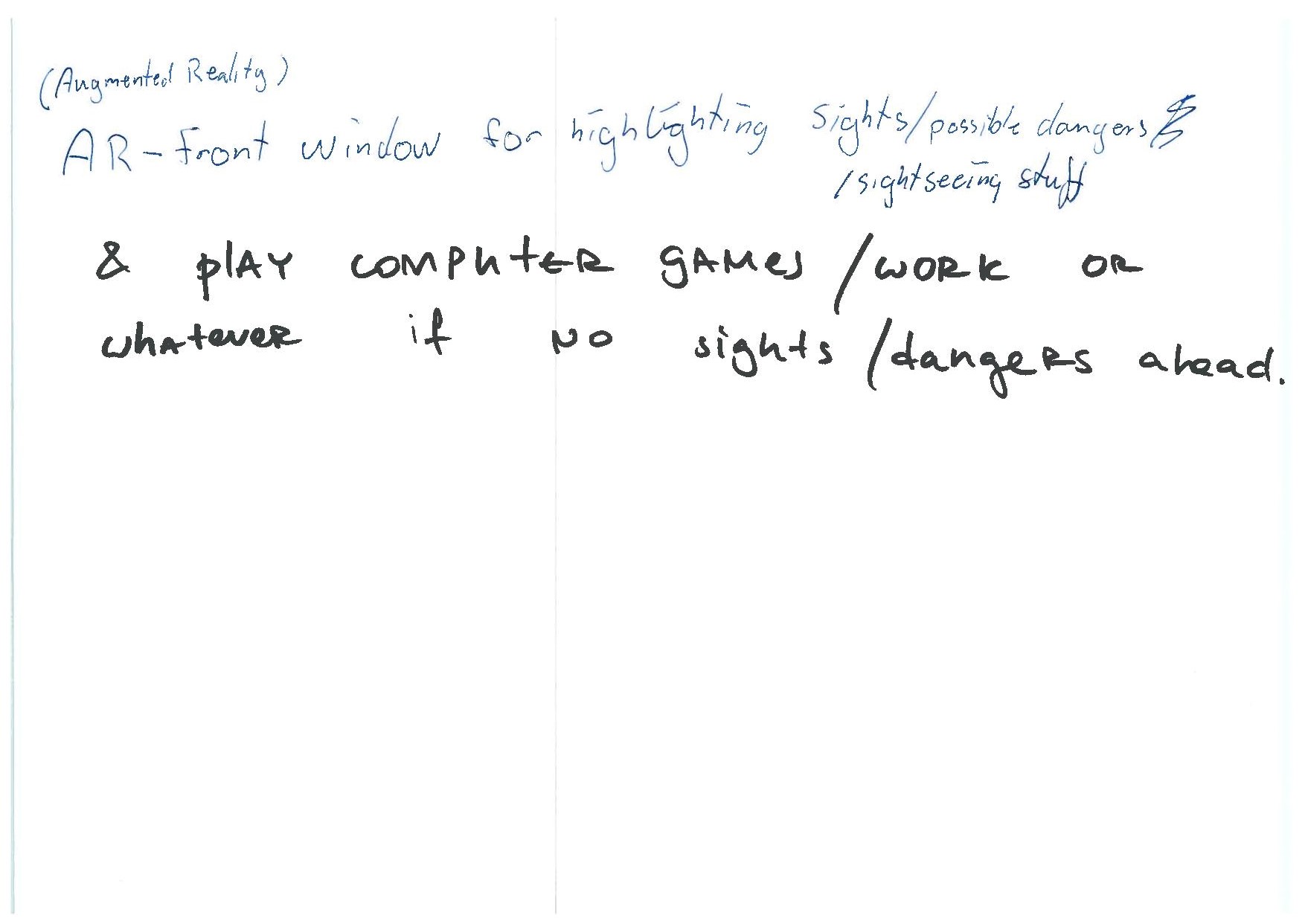
Driver to Car Communication; The ideas in this cluster are concerned about the control factor that is found important by drivers. The ideas are all about buttons and interfaces which give the driver control over the car. Buttons that tell the car to pull over, or change directions. The way to do this could be via a tablet or an integrated screen in the dashboard.
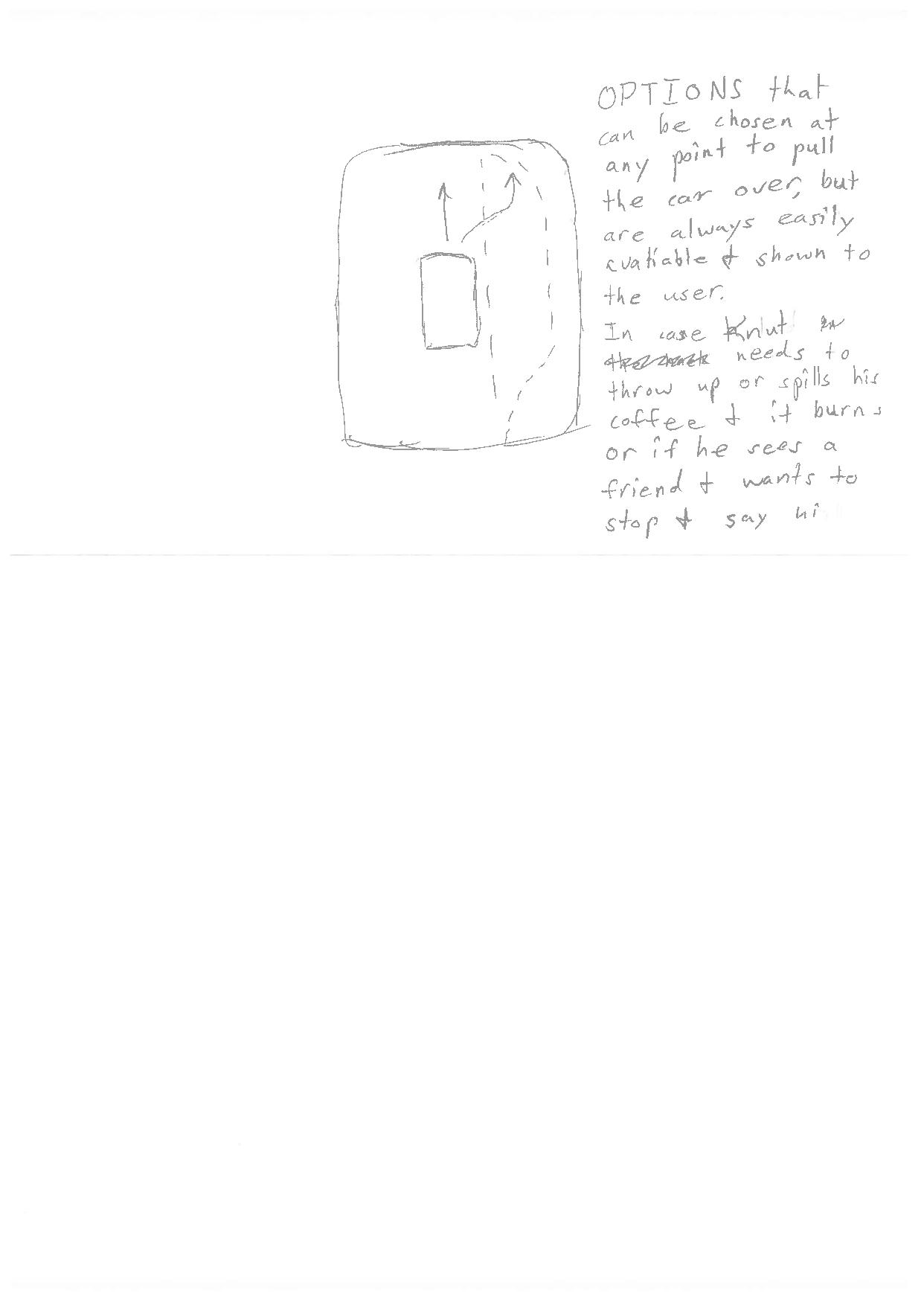

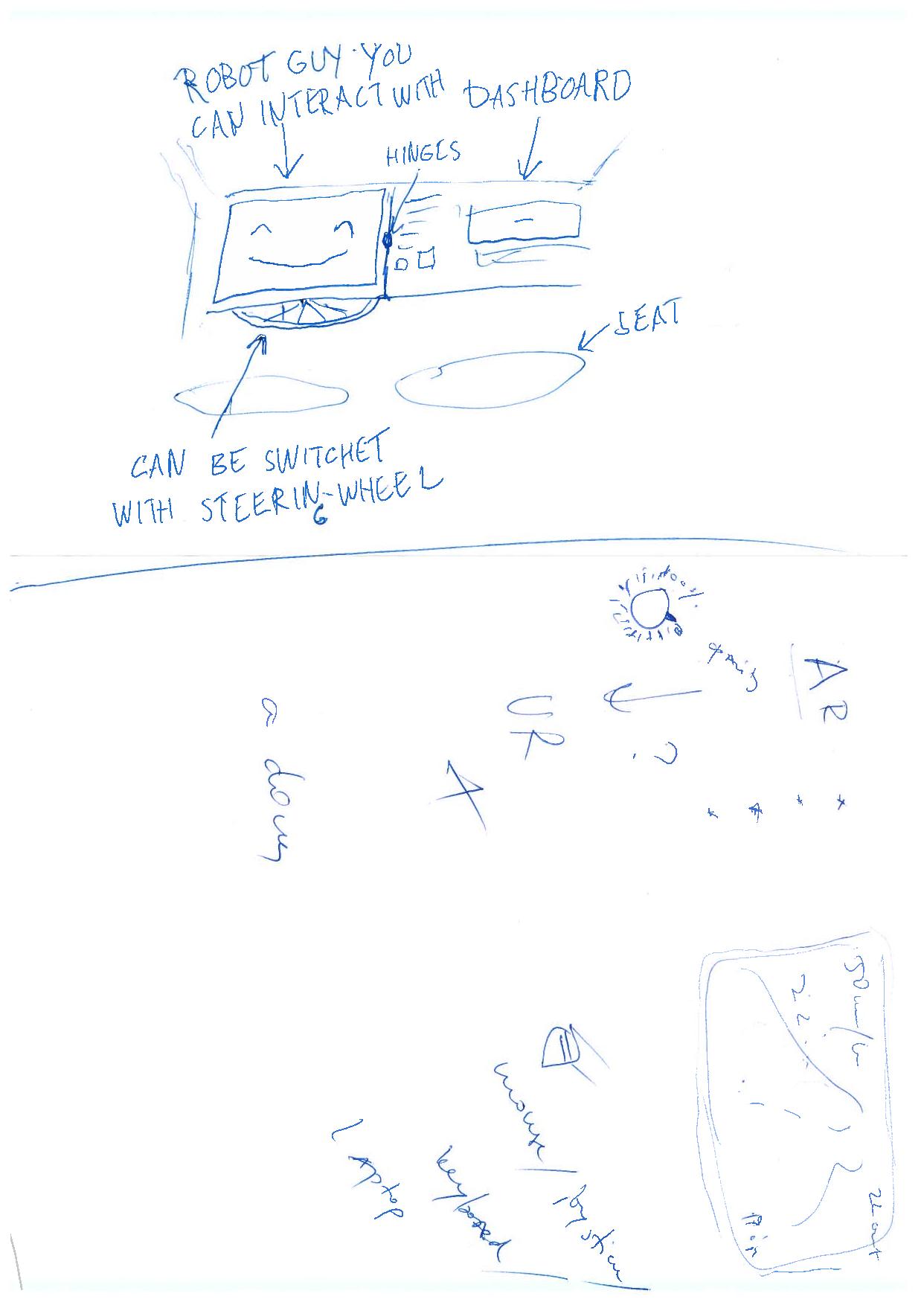
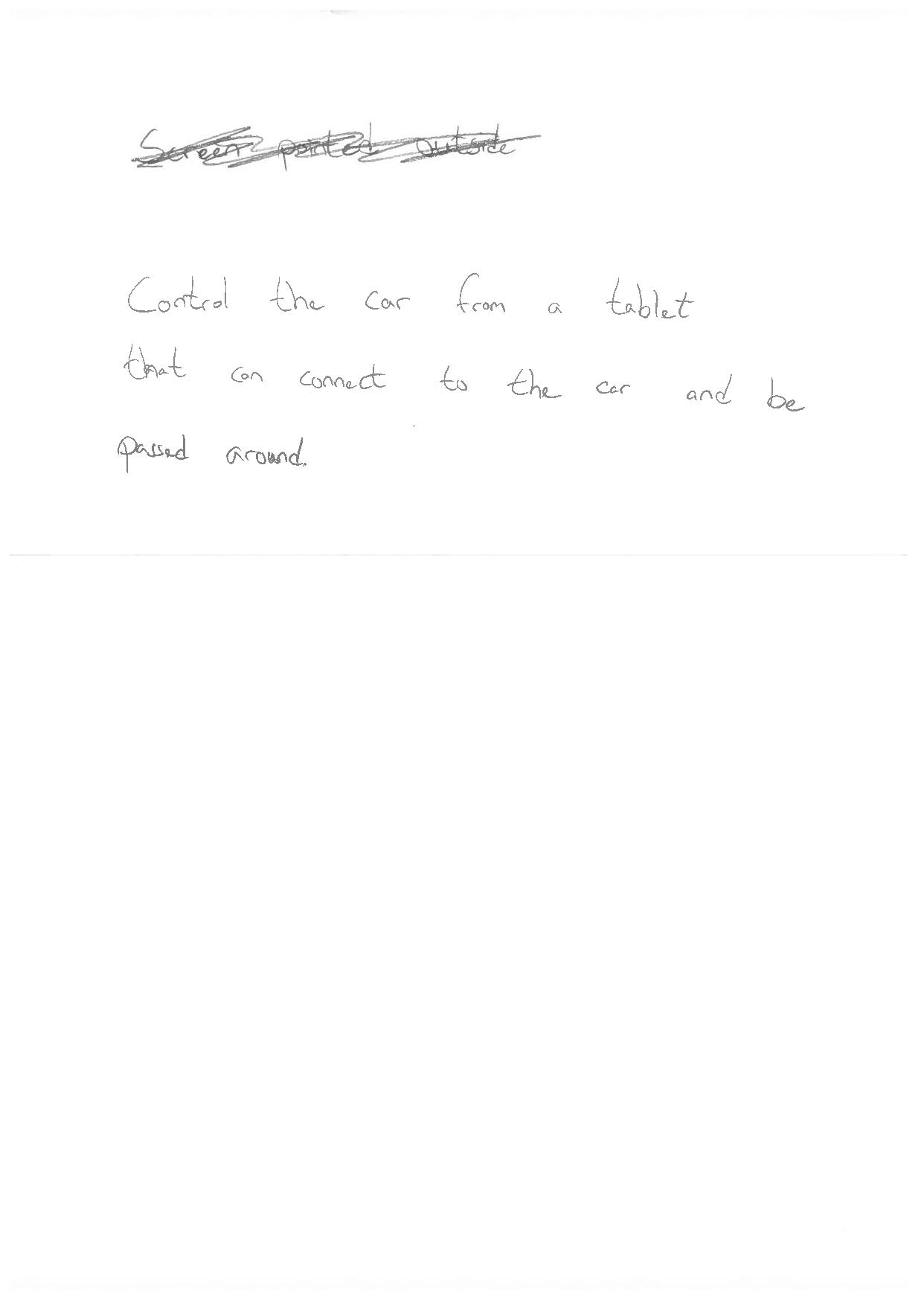
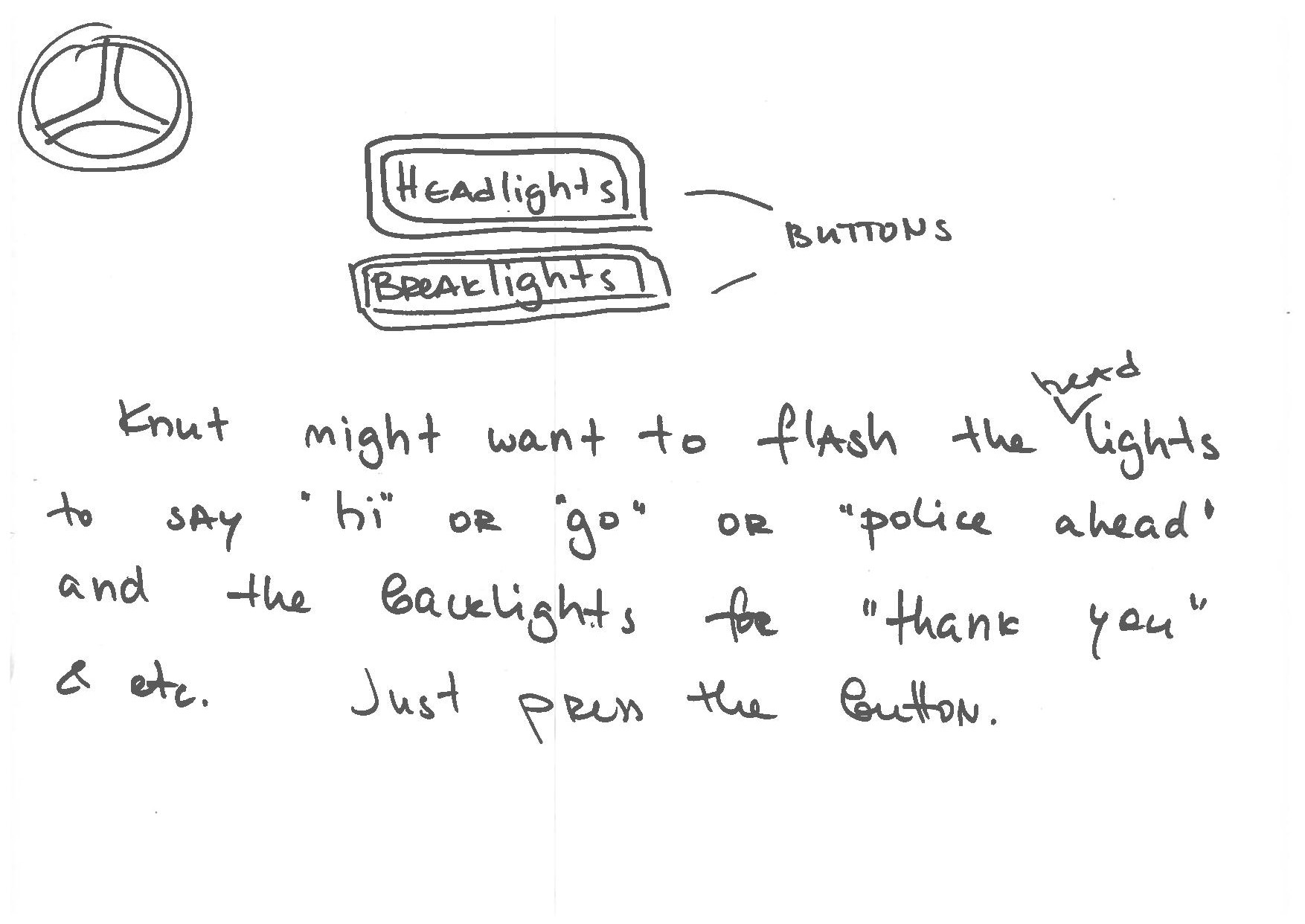
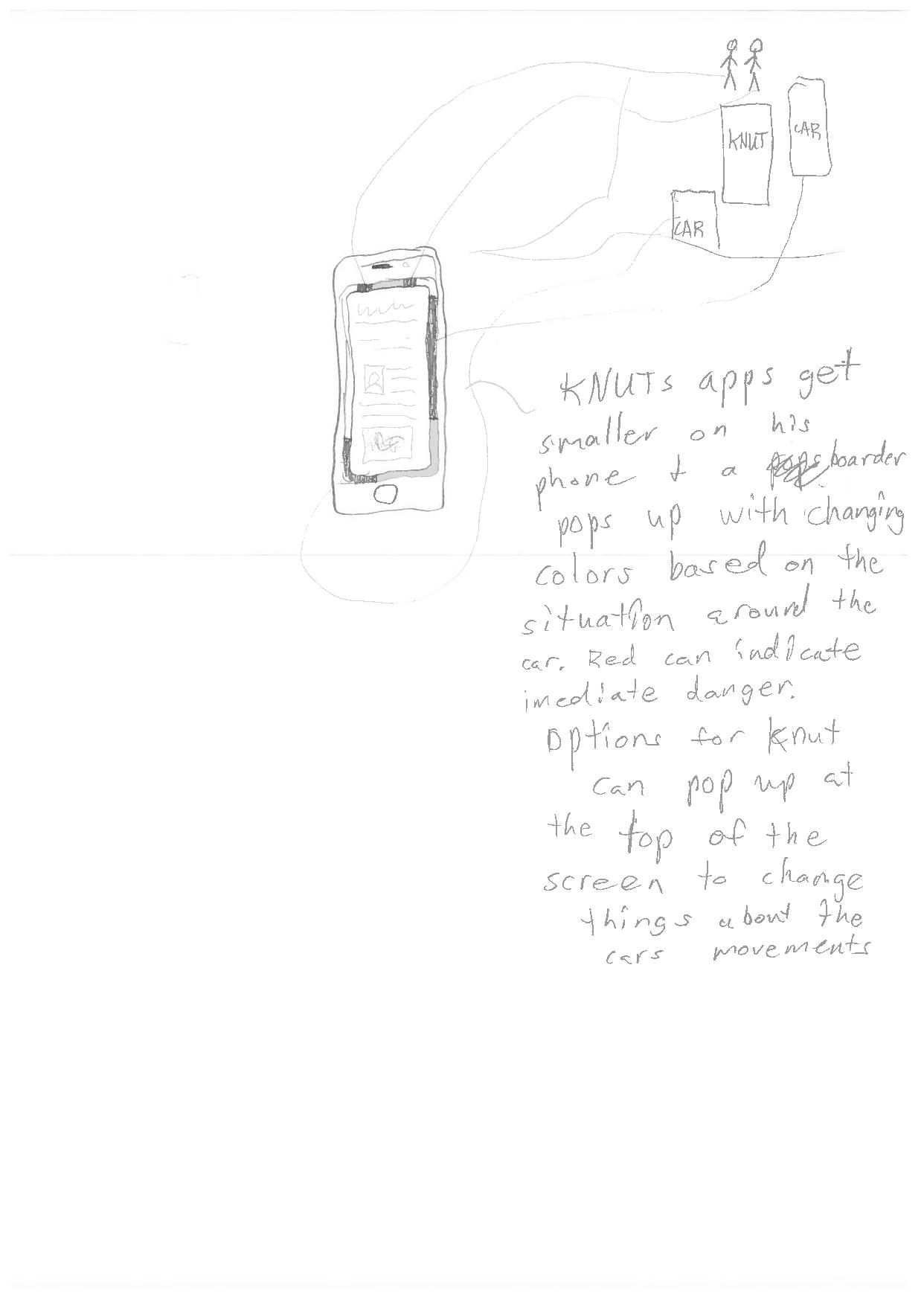

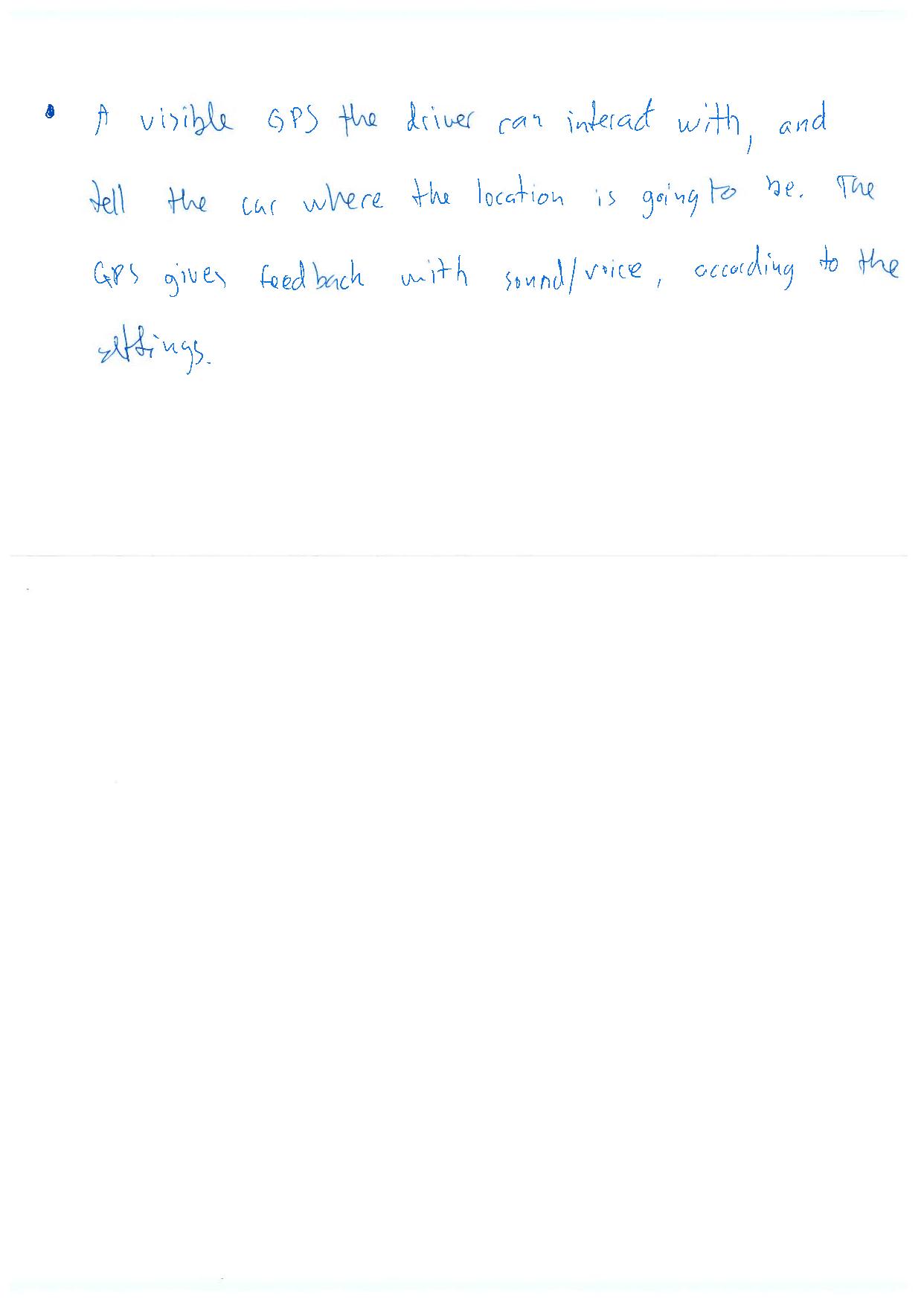
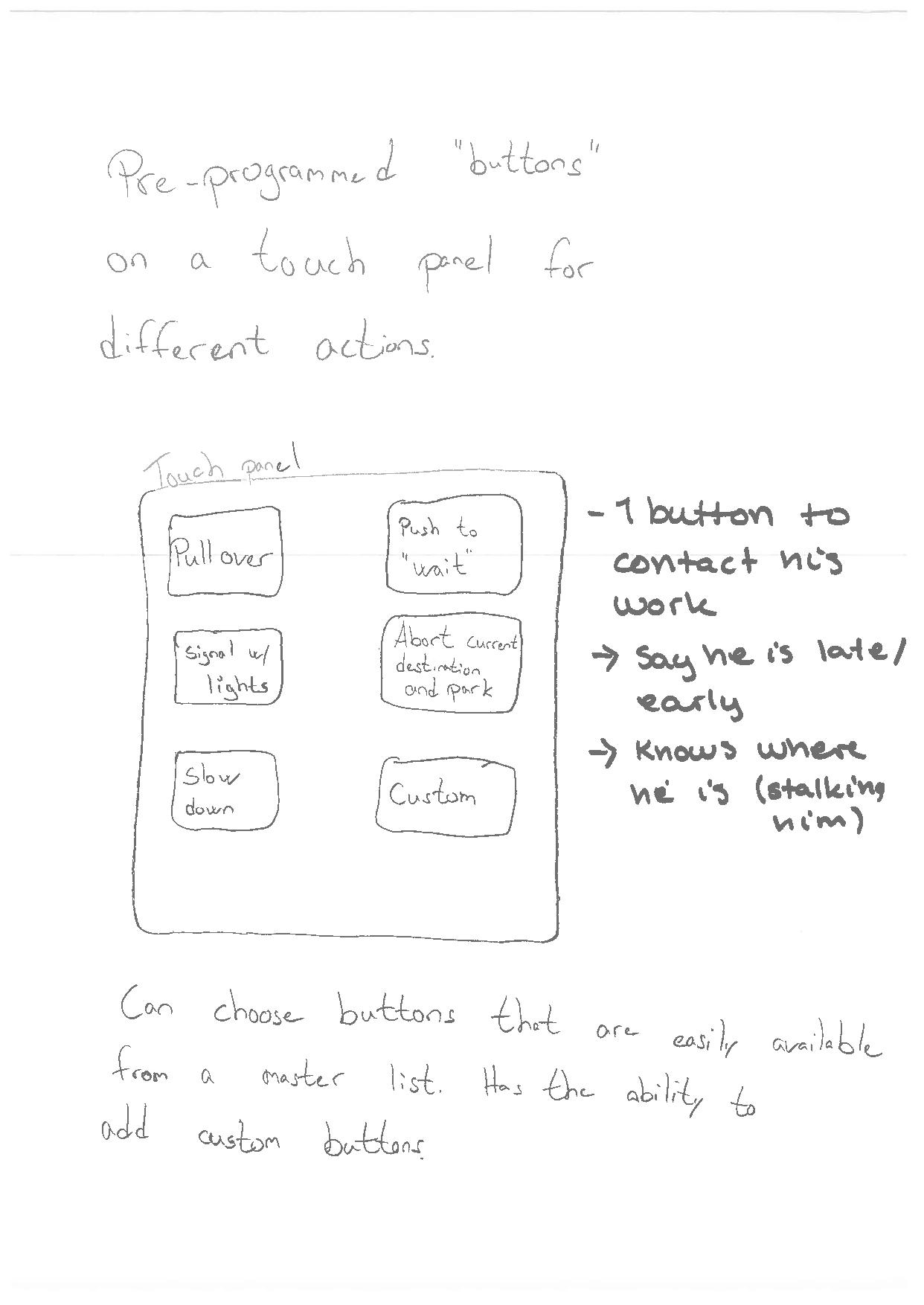
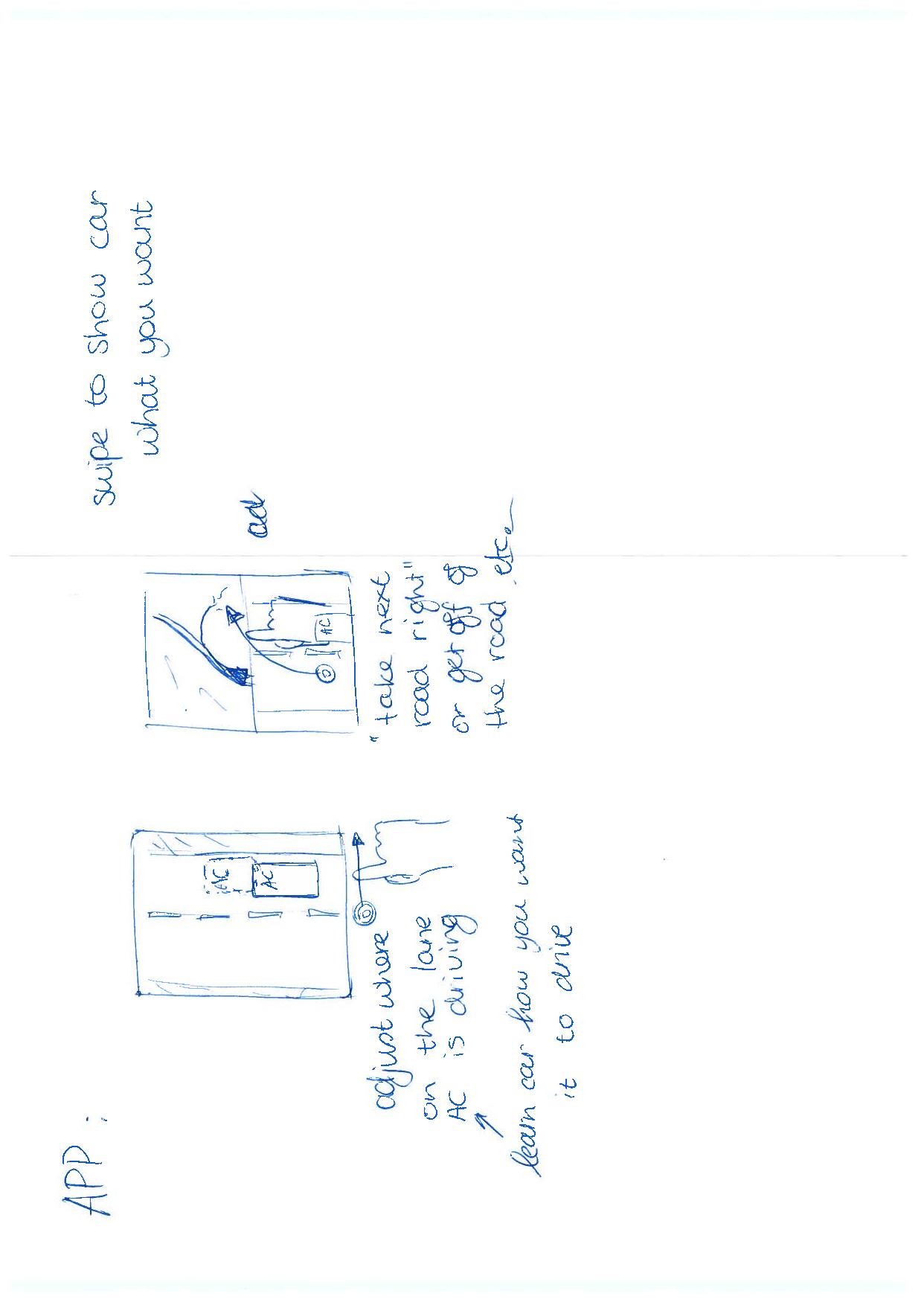
Driver to Environment Communication; With these ideas the driver is enabled to directly communicate towards the other road users via for example a screen or blinking lights.
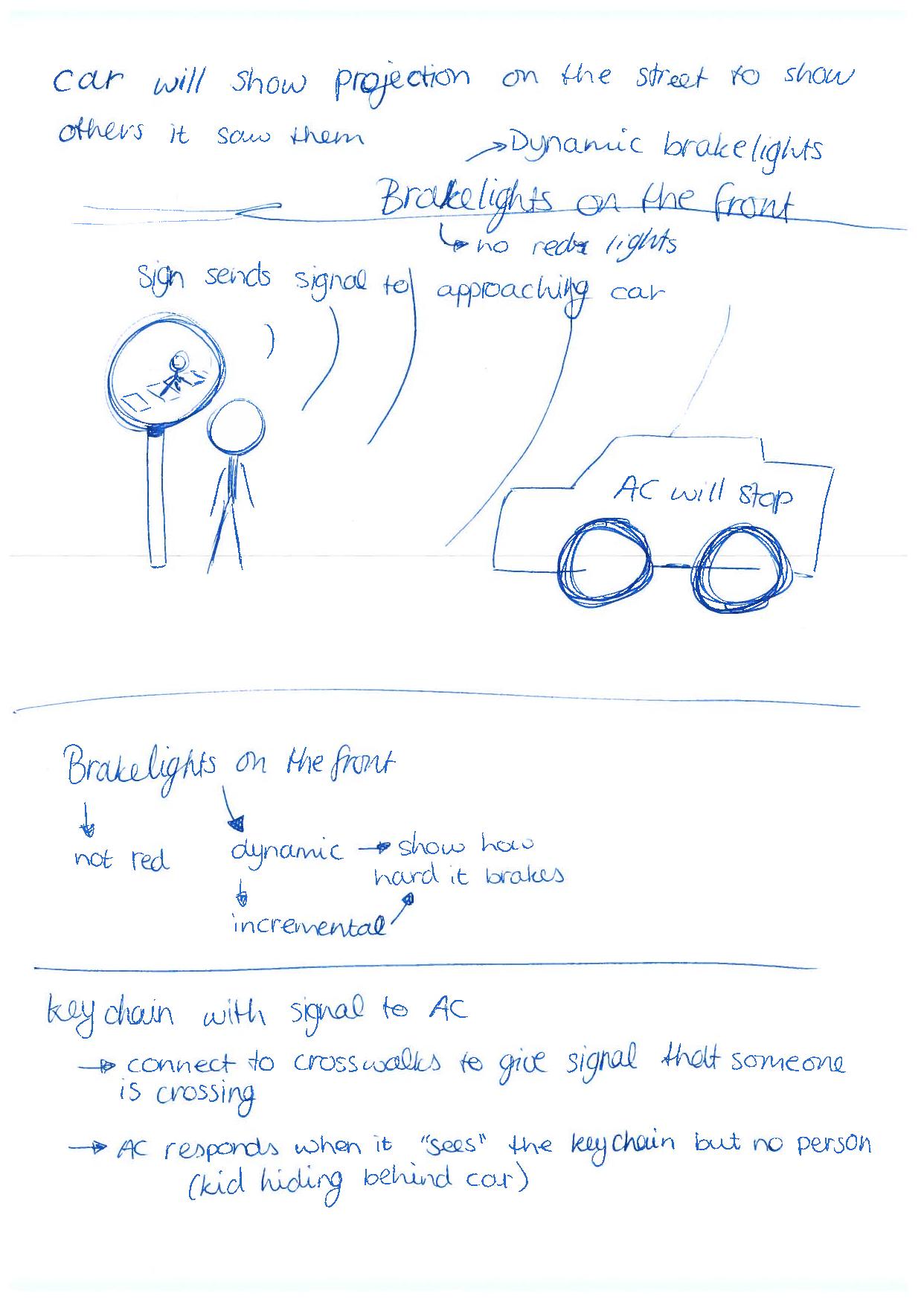
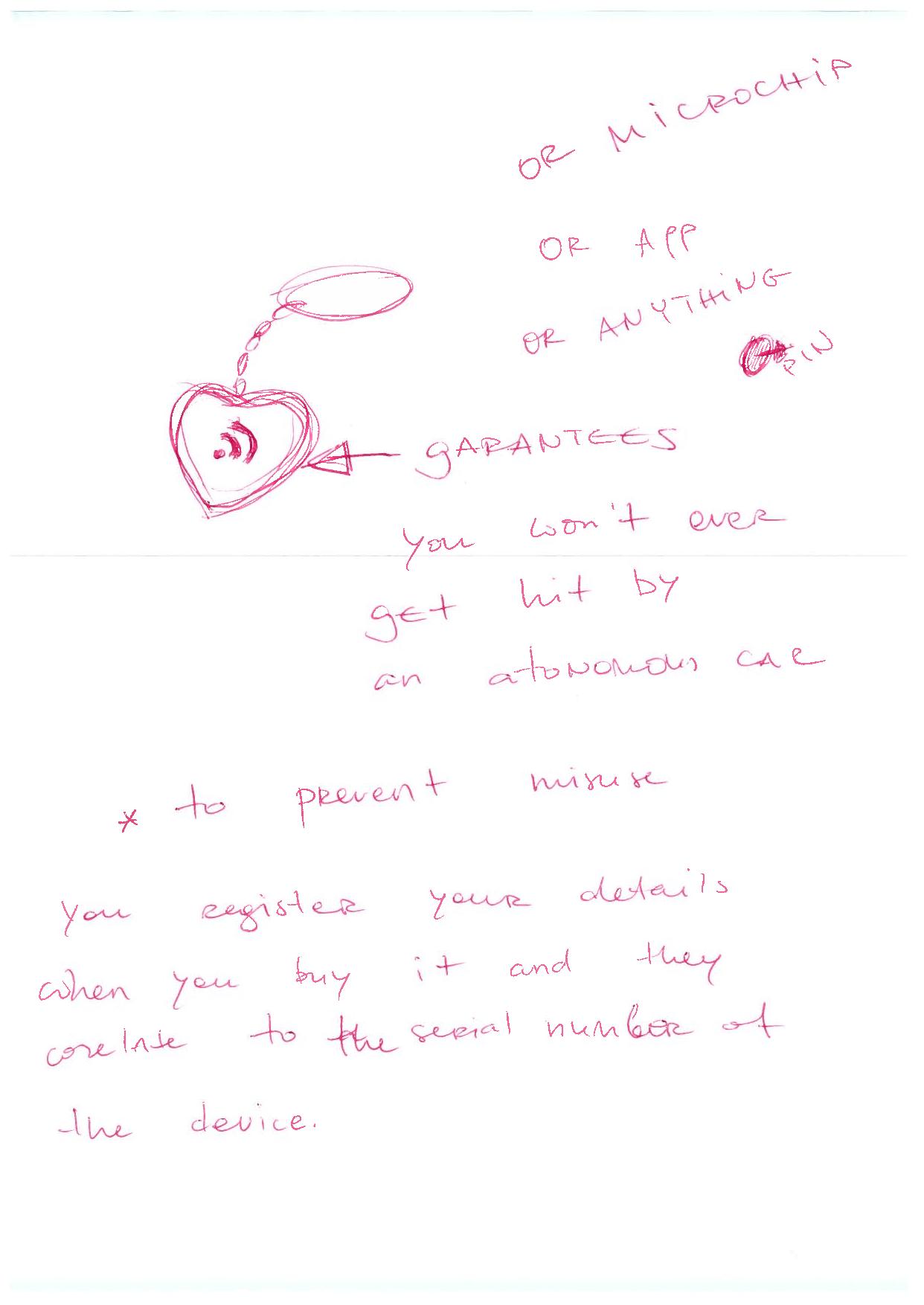
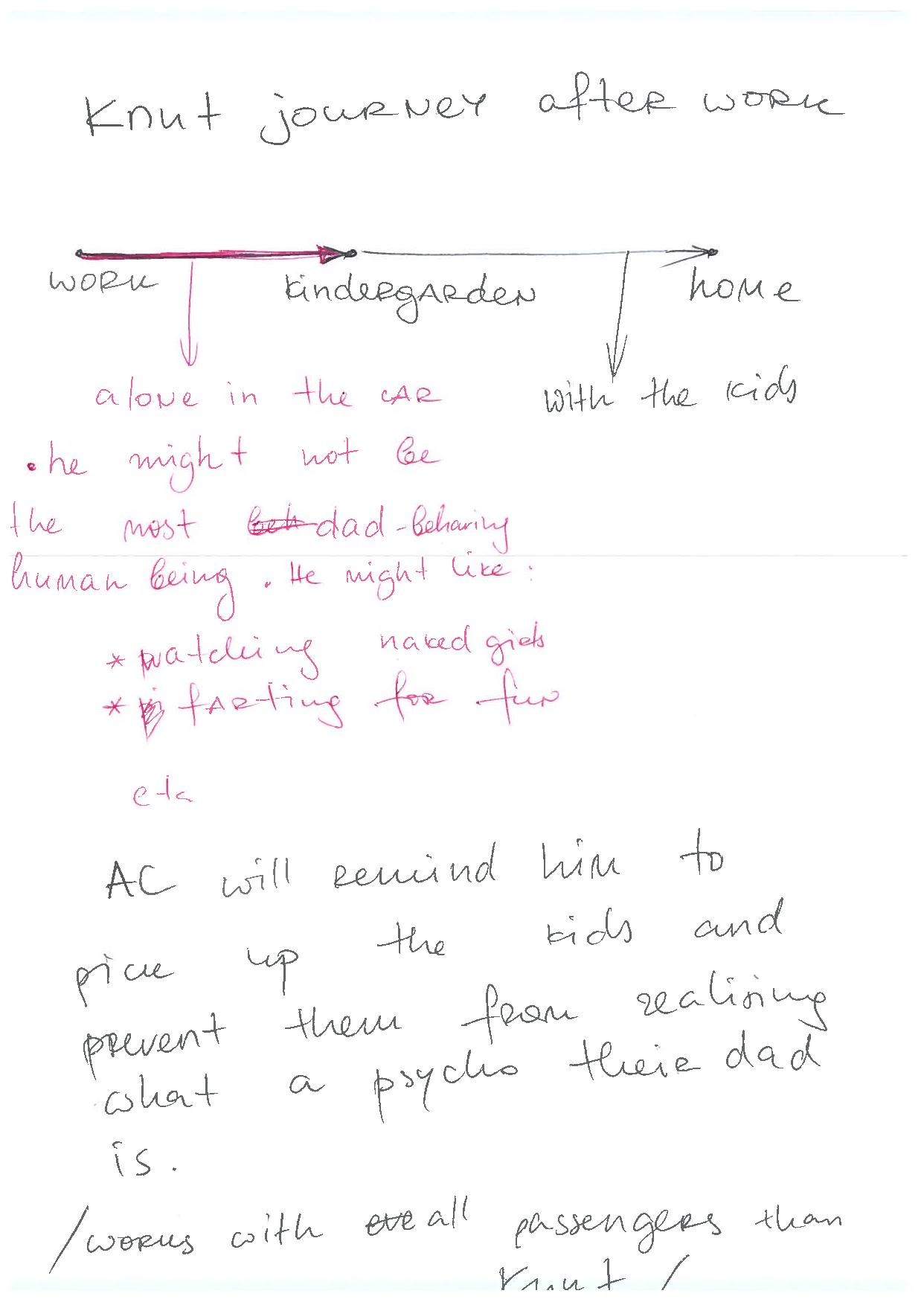
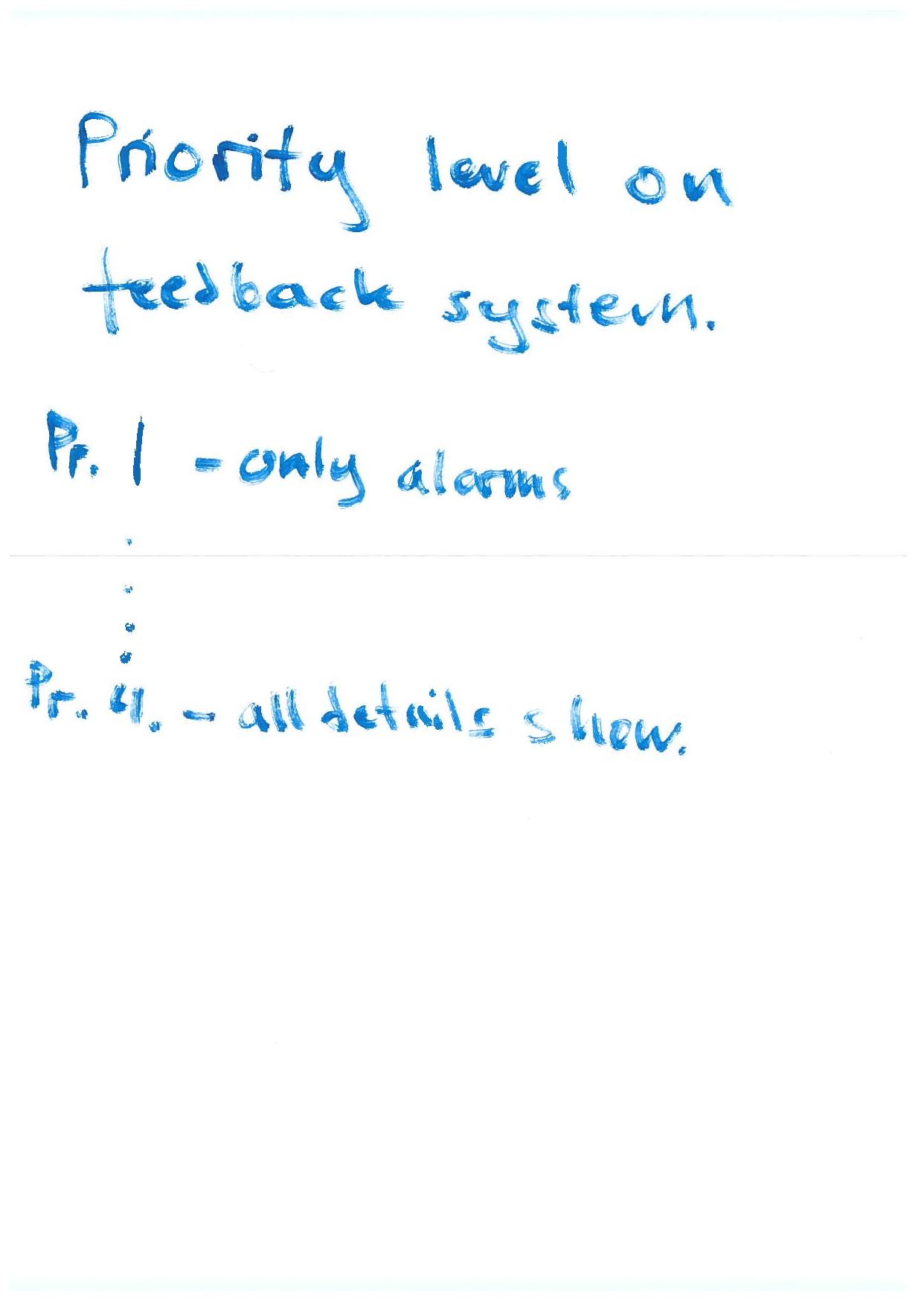
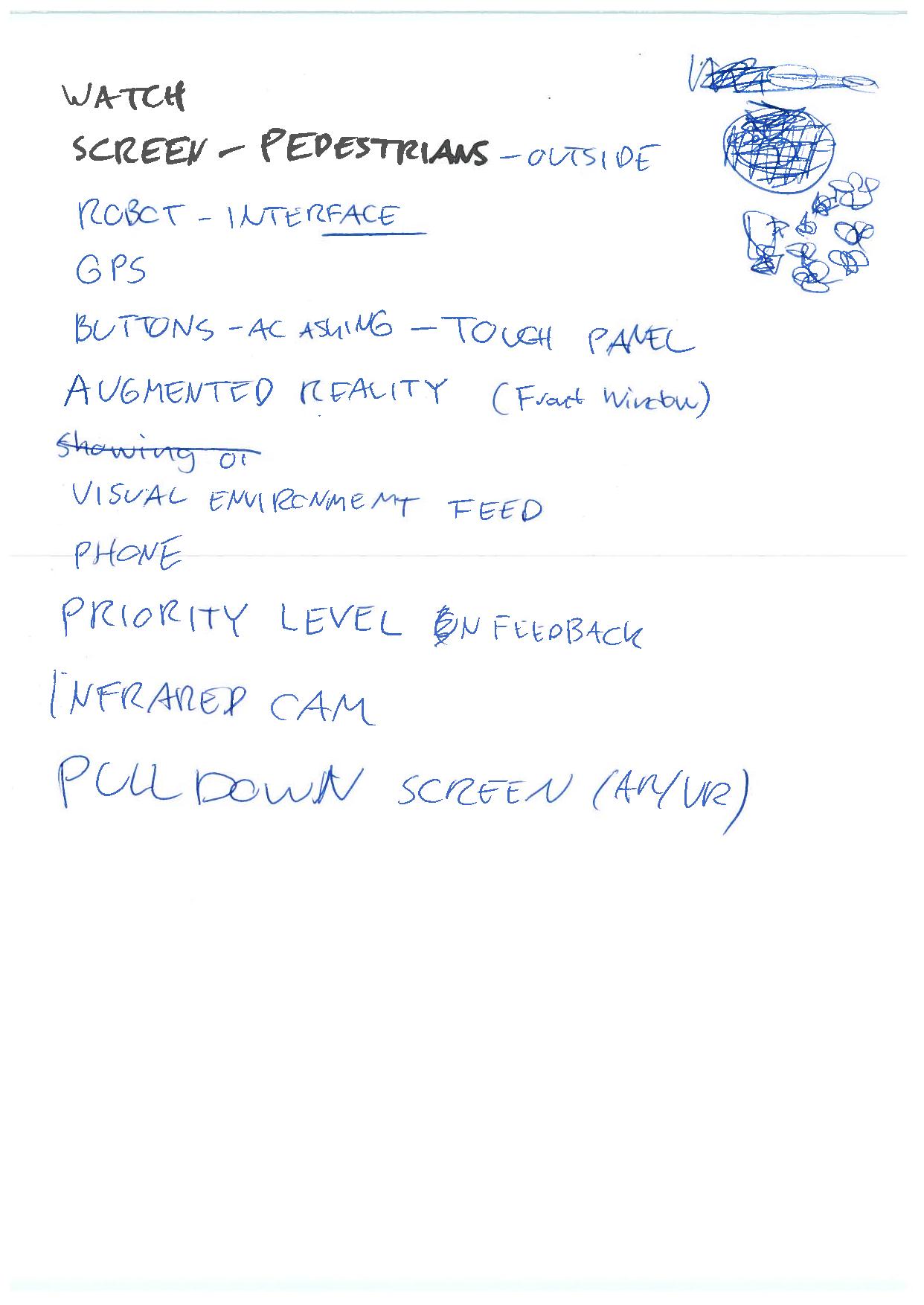
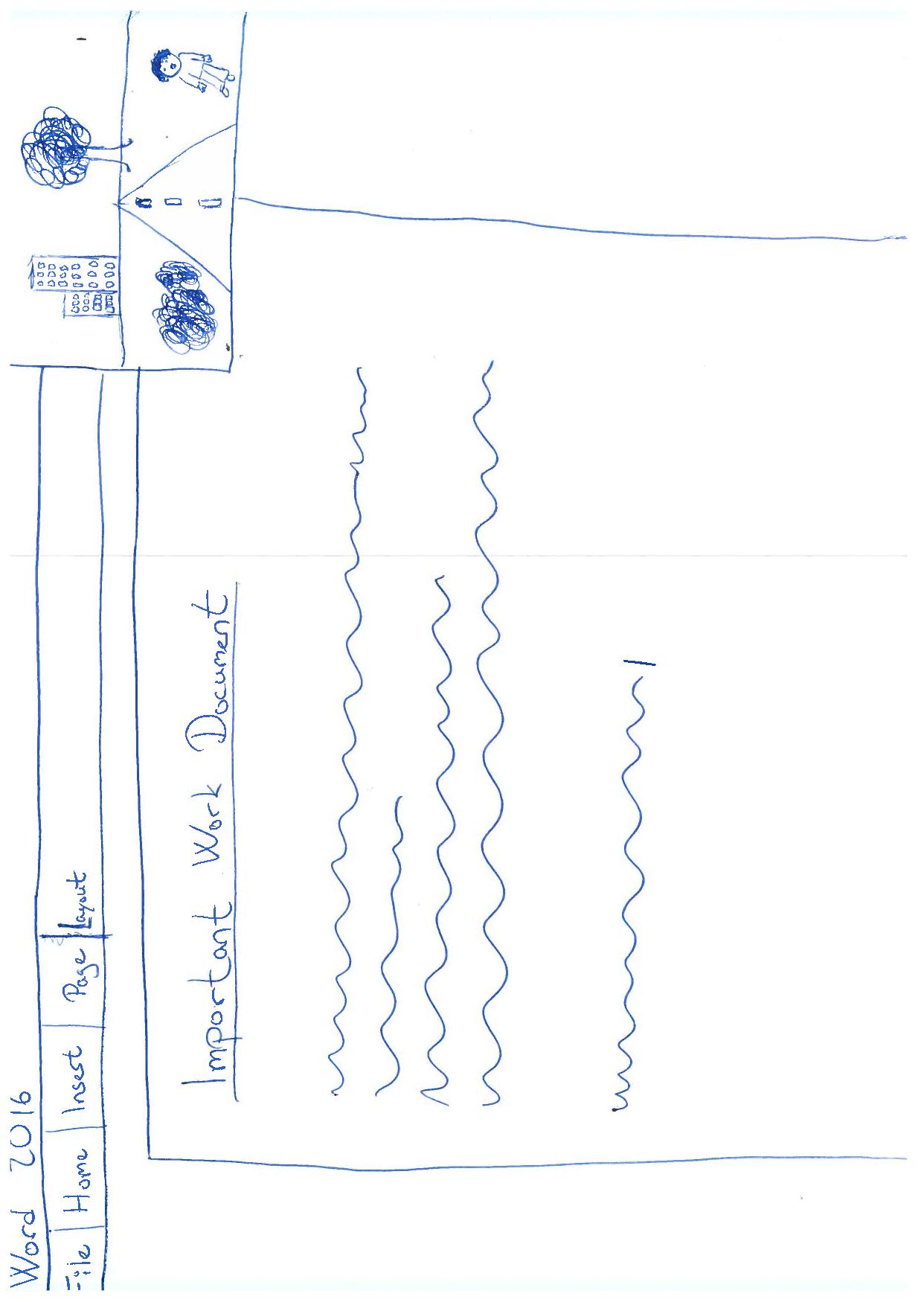
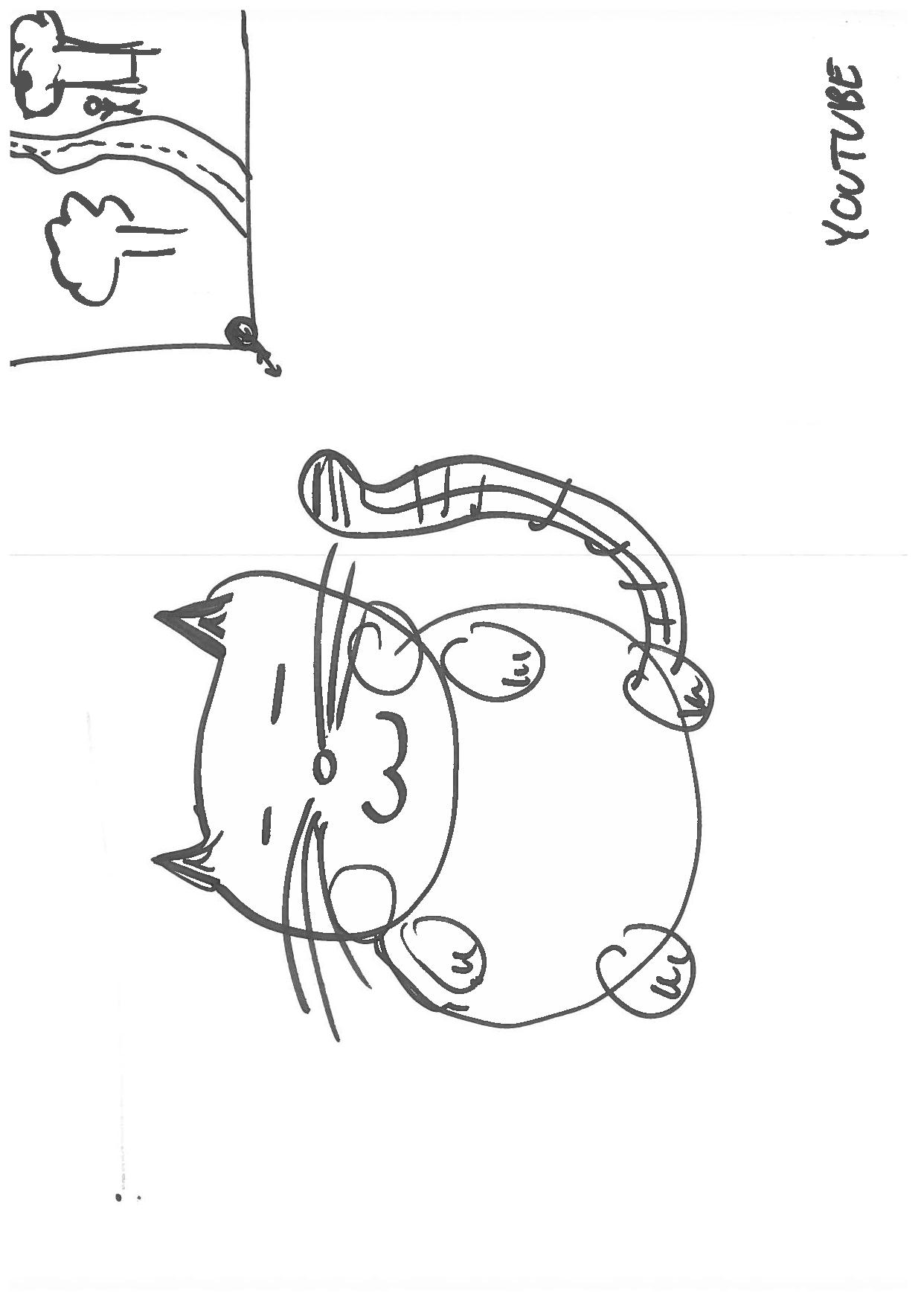
Car Adjustments; The last cluster is about comforting the driver by making adjustments in the car to make the car ride more comfortable. A mini fridge in the door, a coffee machine or an optimized space to work in the car.

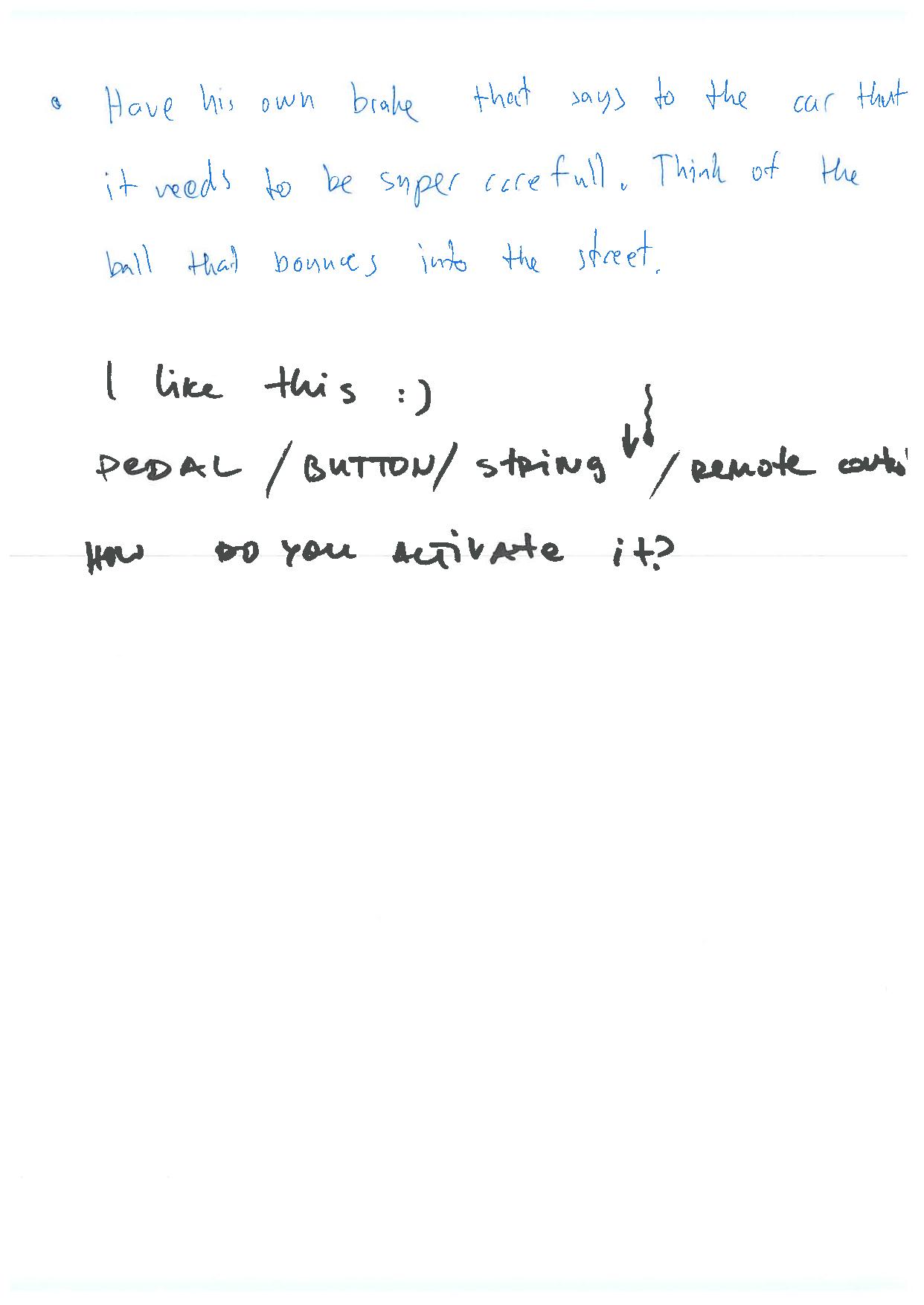
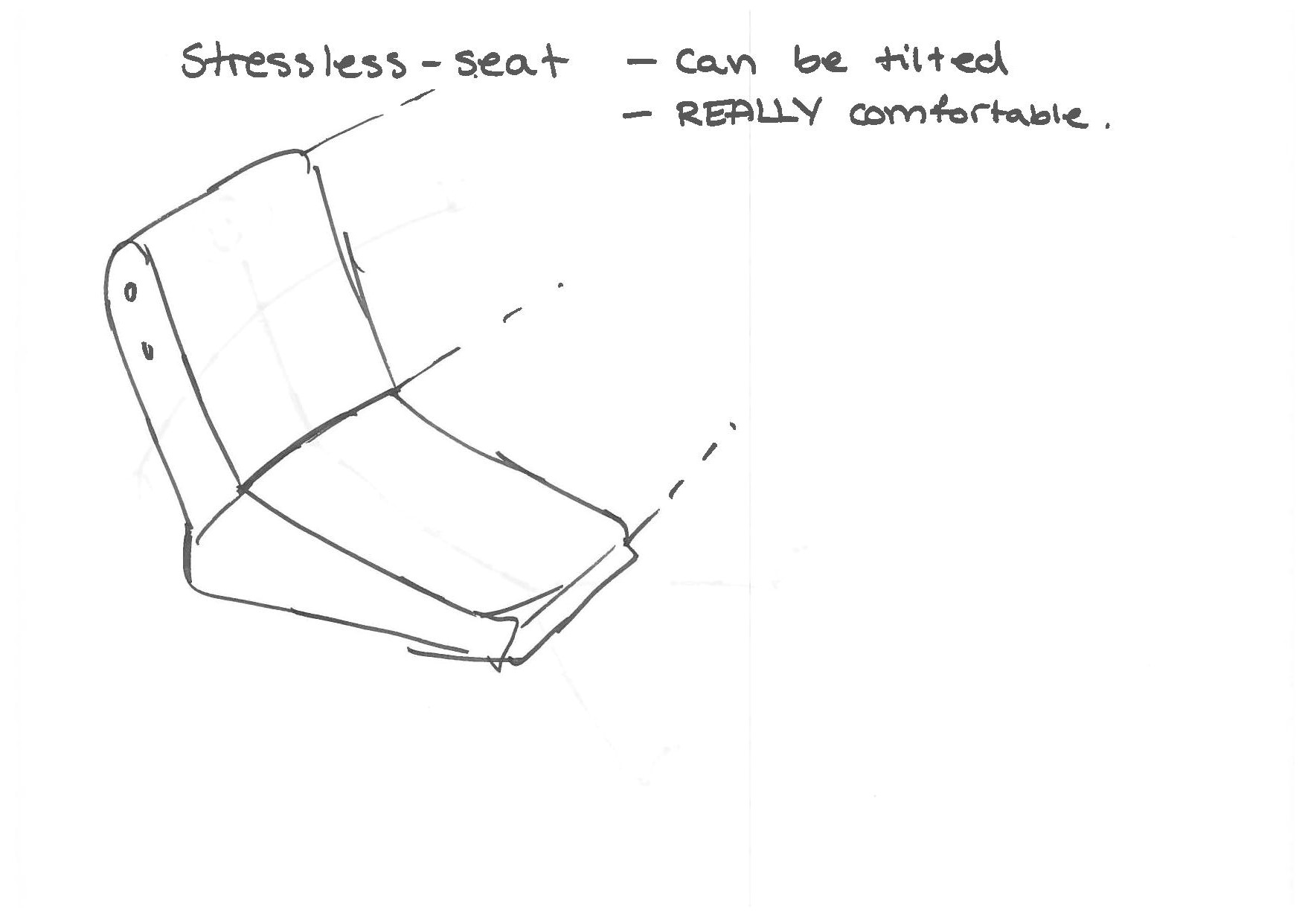

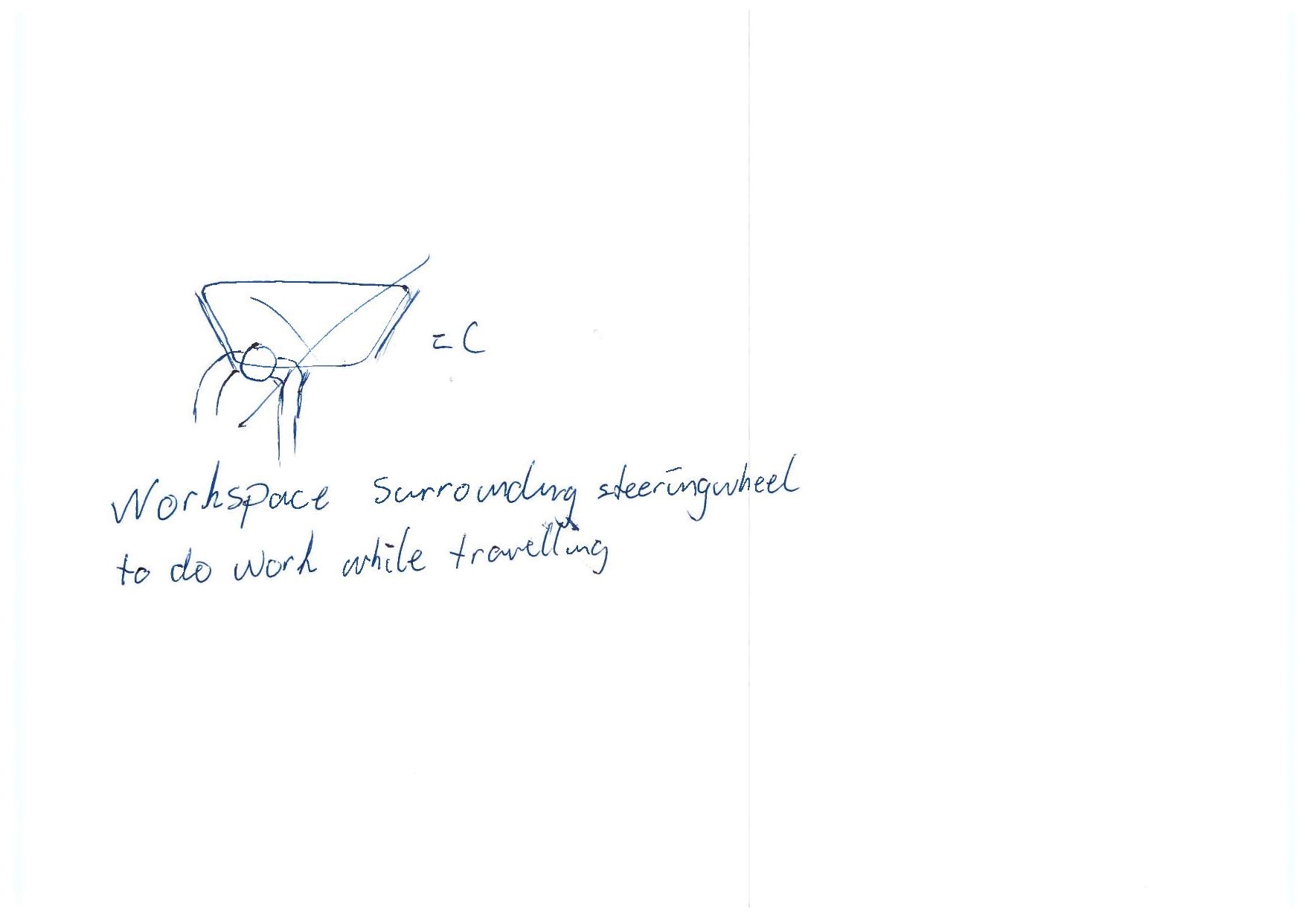

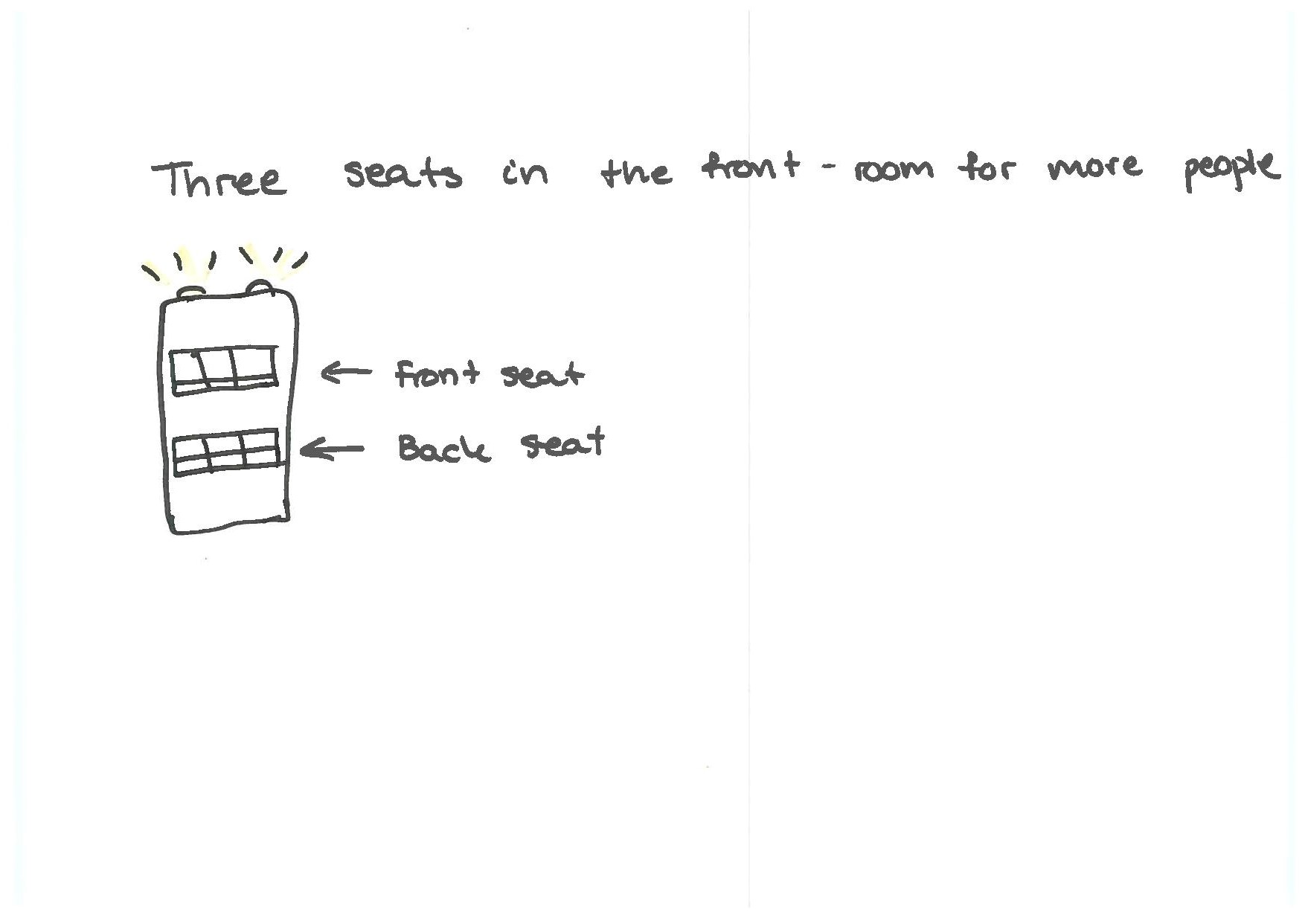
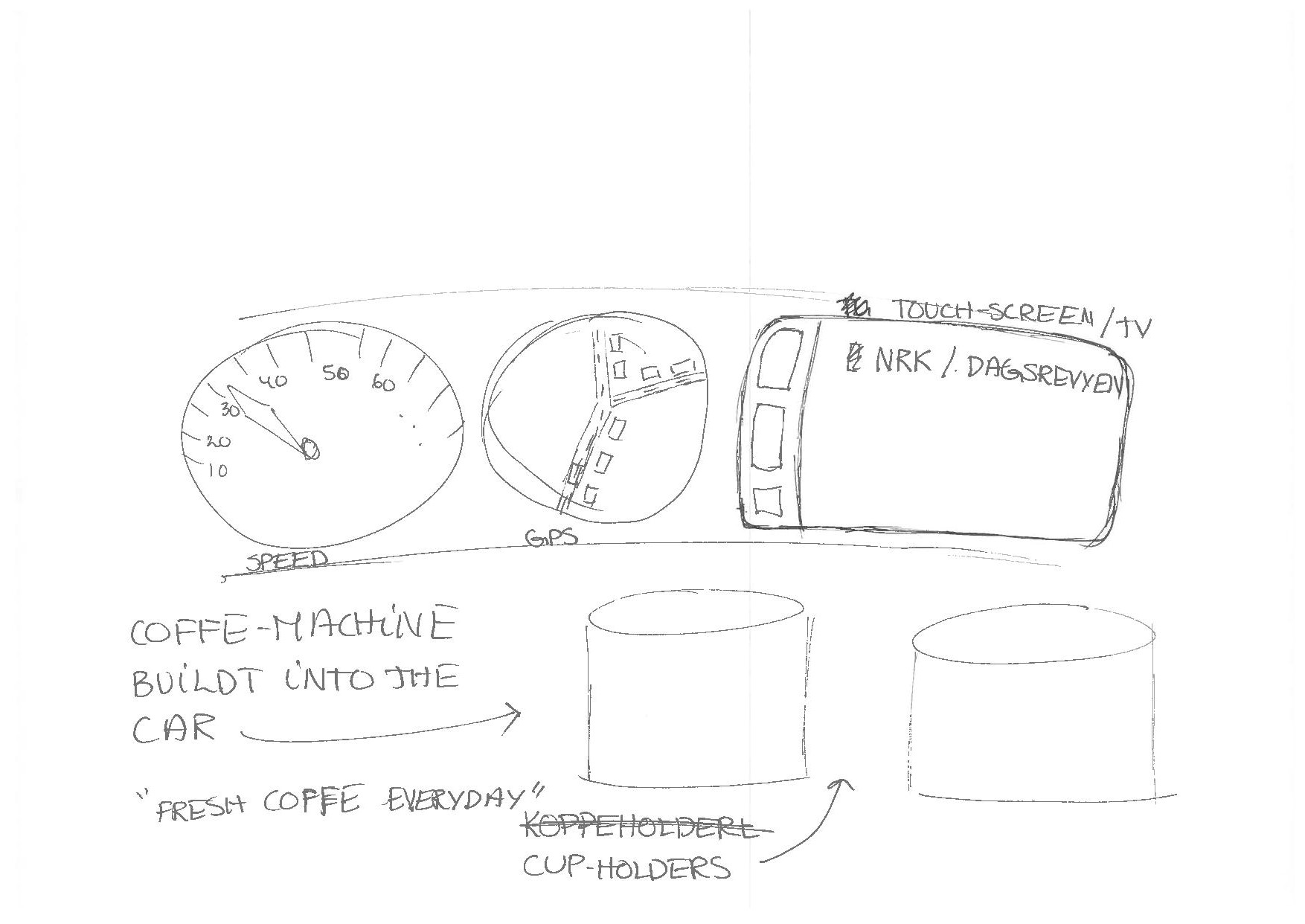


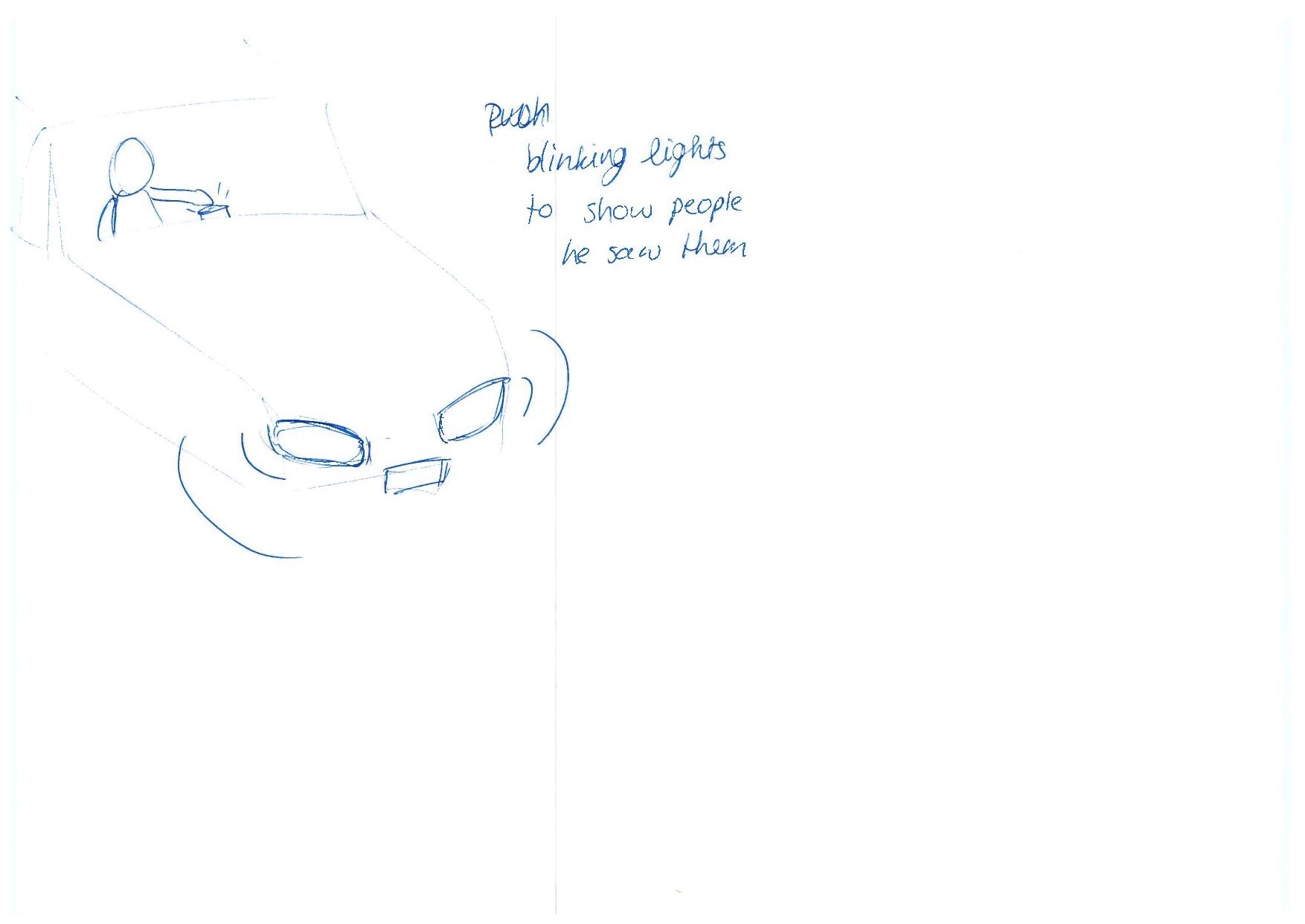

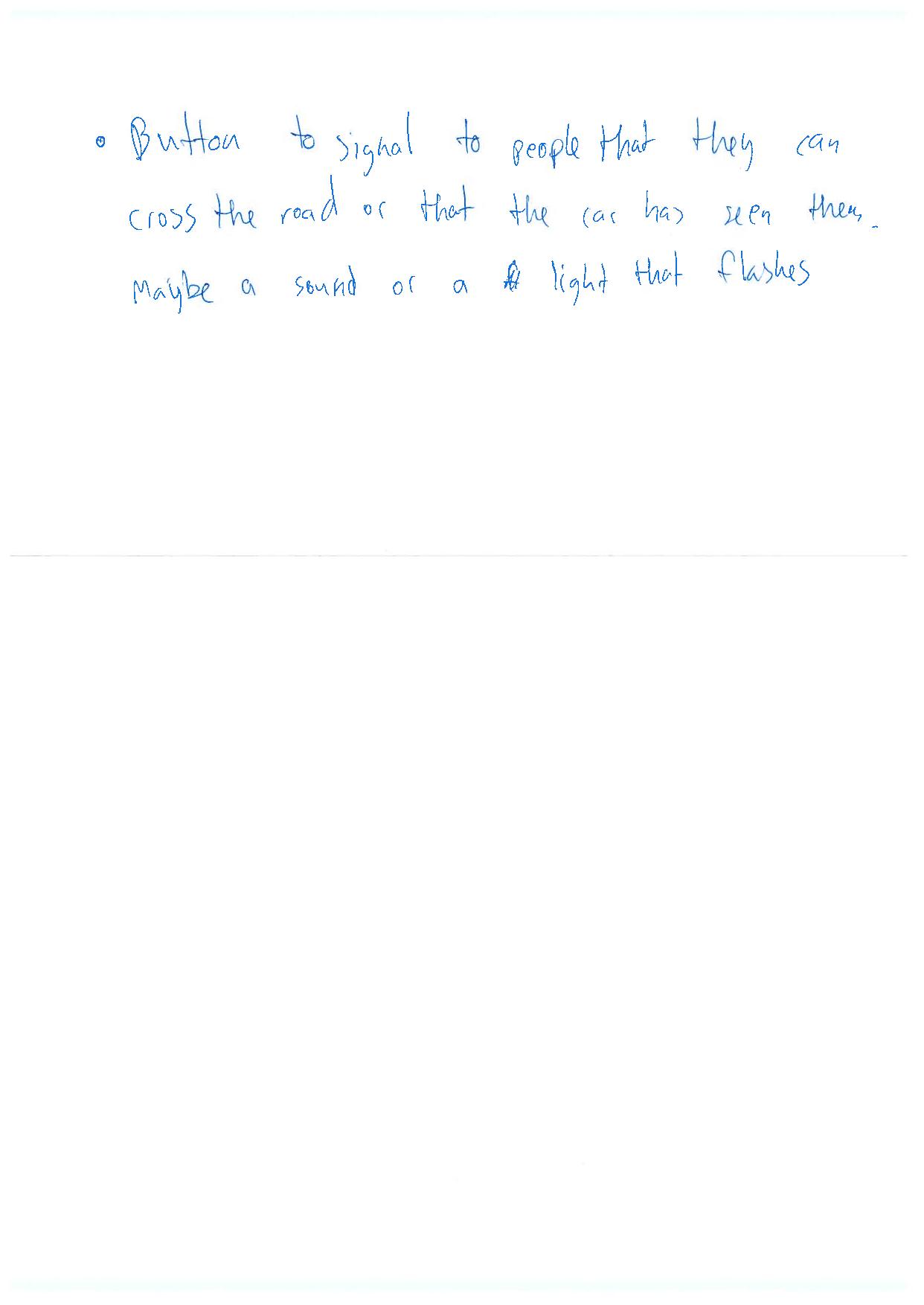
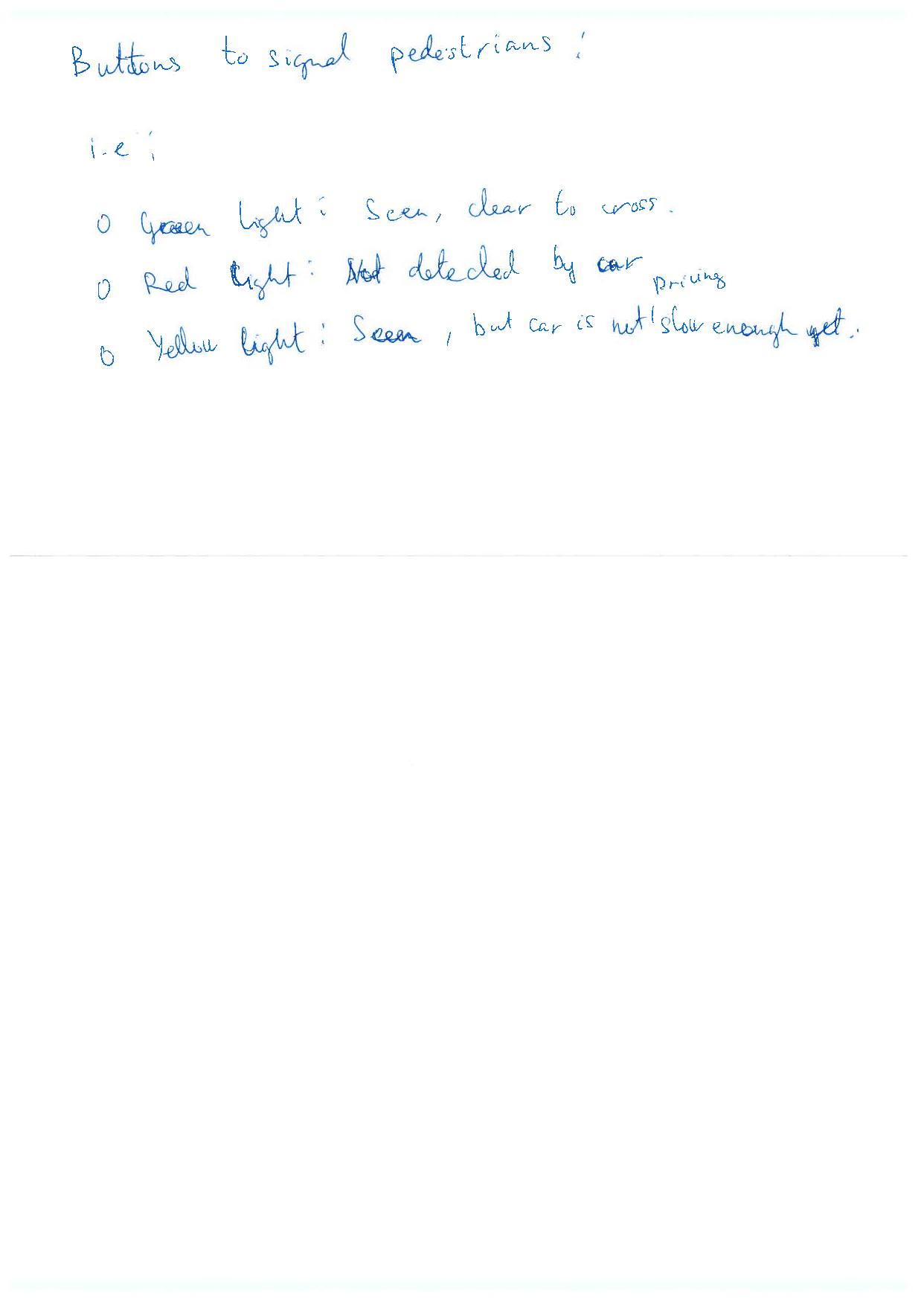
After the clustering we started discussing on the ideas, which led to some more ideas, which we did not work with in the end. For the next phase, the prototyping, we split up in subgroups again to work on one of the prototype directions we set. Every subgroup was working on either sound, light, visuals or touch, to find out which way of communication or interaction will work best to improve the driving experience.